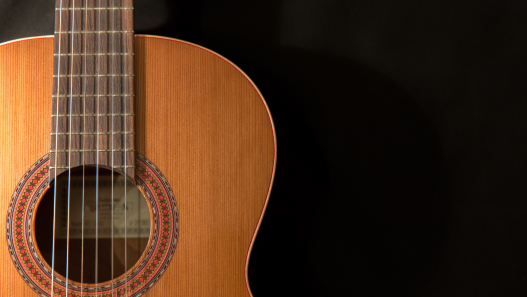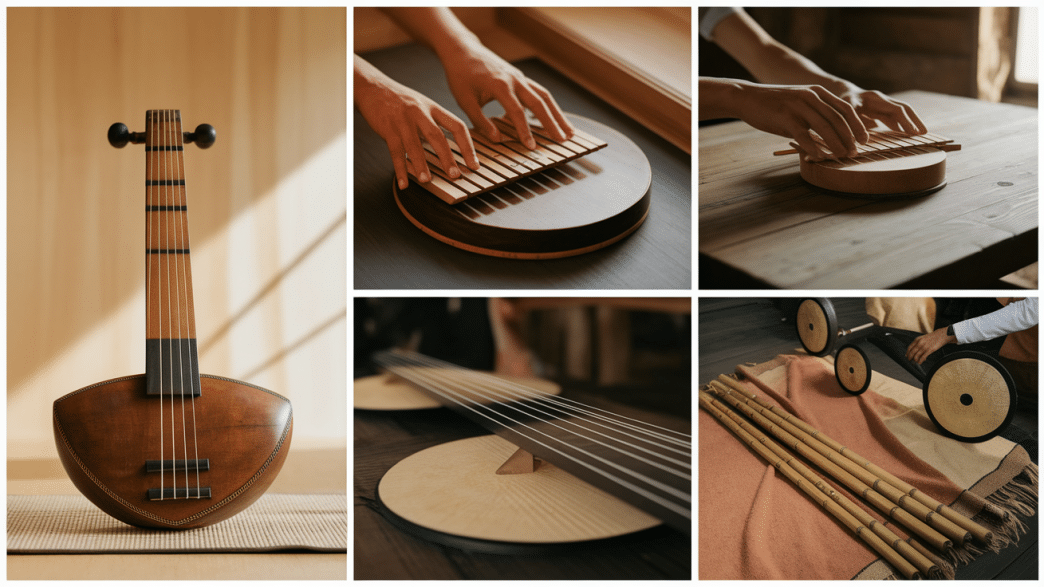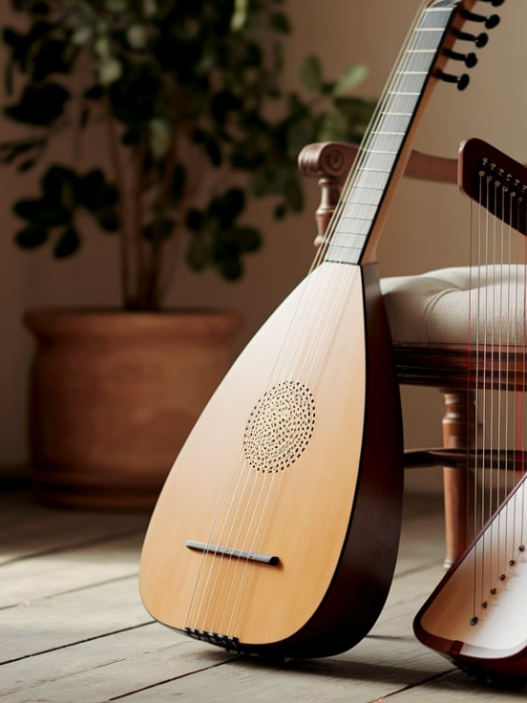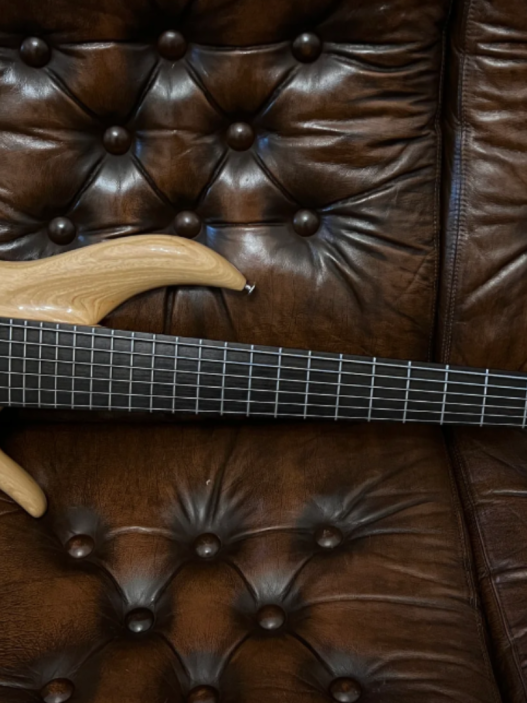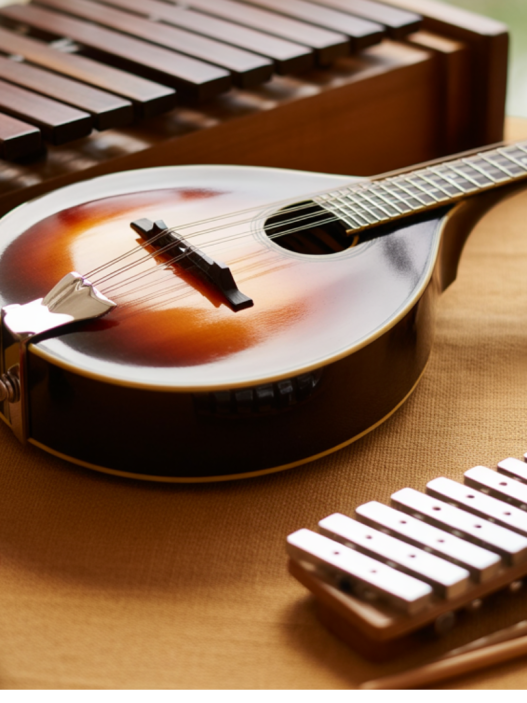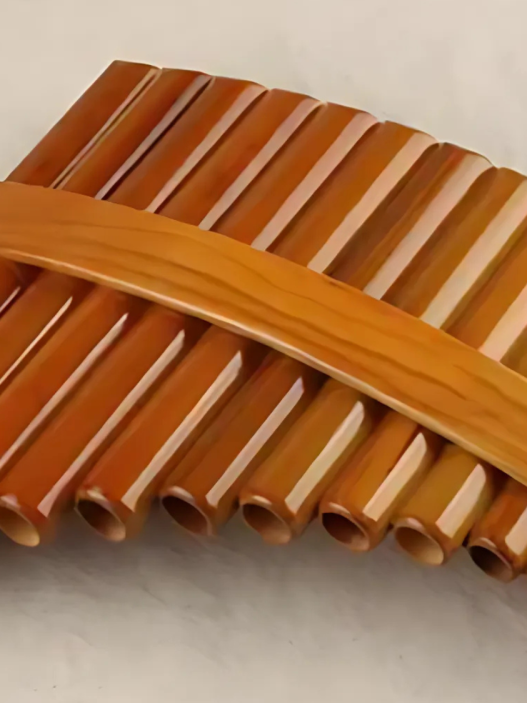Most people can name a guitar or piano in seconds. But ask them about instruments that start with K, and they’ll probably stare blankly for a moment.
That’s unfair. The letter K kicks off some pretty cool musical tools that deserve more love. From the playful kazoo that made everyone giggle as kids to the mystical kalimba that sounds like fairy music, K instruments pack some serious personality.
Some make you want to dance. Others transport you to faraway places. A few might even surprise you with how they’re played.
This collection covers the K instruments that stand out from the crowd. Each one has its own story, its own sound, and its own way of making music memorable. Ready to meet some musical gems that don’t get nearly enough attention?
Why Find Instruments Starting With K?
Exploring musical instruments that start with K is a fun and surprisingly educational way to deepen your understanding of global music.
Grouping instruments by their first letter makes it easy for students, music lovers, and trivia fans to connect new facts with familiar sounds.
Instruments like the kora, koto, and kazoo show how diverse cultures, from African villages to Japanese courts, have crafted unique tools for creating melody and rhythm.
This simple approach opens doors to world traditions and modern genres alike, revealing how K instruments enrich everything from folk songs to contemporary pop music.
Ready to expand your musical vocabulary and impress your friends with fresh trivia? Let’s dive in and see what the letter K has in store!
List of Musical Instruments That Start With K
Music has always captivating us with its variety of sounds and instruments. Some instruments that start with K are truly unique and culturally rich. Let’s explore a few of these interesting musical gems.
1. Kora
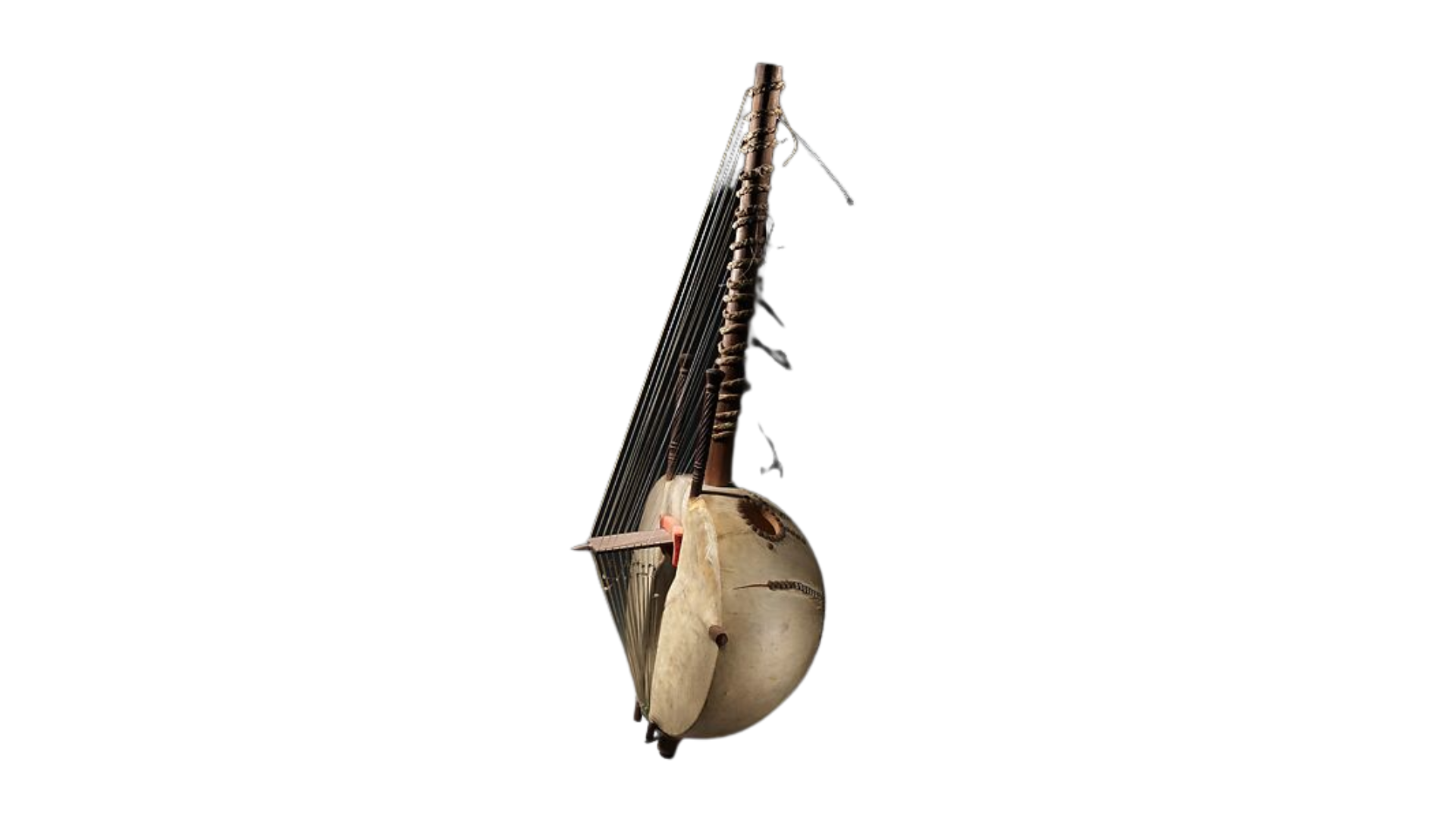
The kora is a West African stringed instrument that resembles a harp-lute. It has 21 strings and produces a melodious, calming sound. Traditionally, it’s played by griots who are storytellers and musicians.
Fun fact: The kora’s body is made from a large calabash cut in half and covered with cow skin.
2. Kalimba
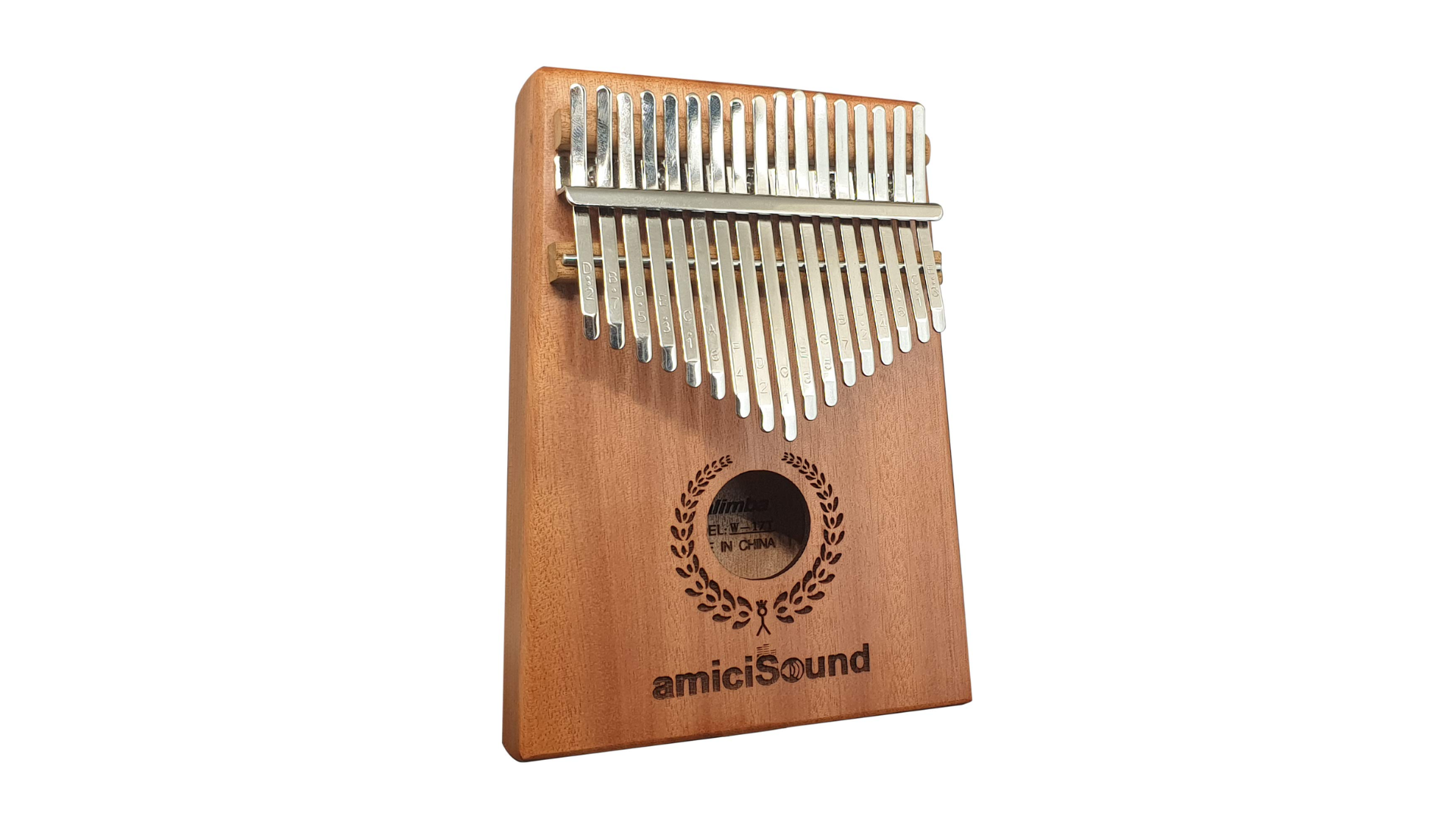
The kalimba, also known as a thumb piano, is a small handheld instrument with metal tines. Players pluck the tines with their thumbs to create soothing, bell-like tones. It’s popular for meditation and relaxation music.
Fun fact: Some kalimbas are tuned to mimic the sounds of flowing water and birds.
3. Koto
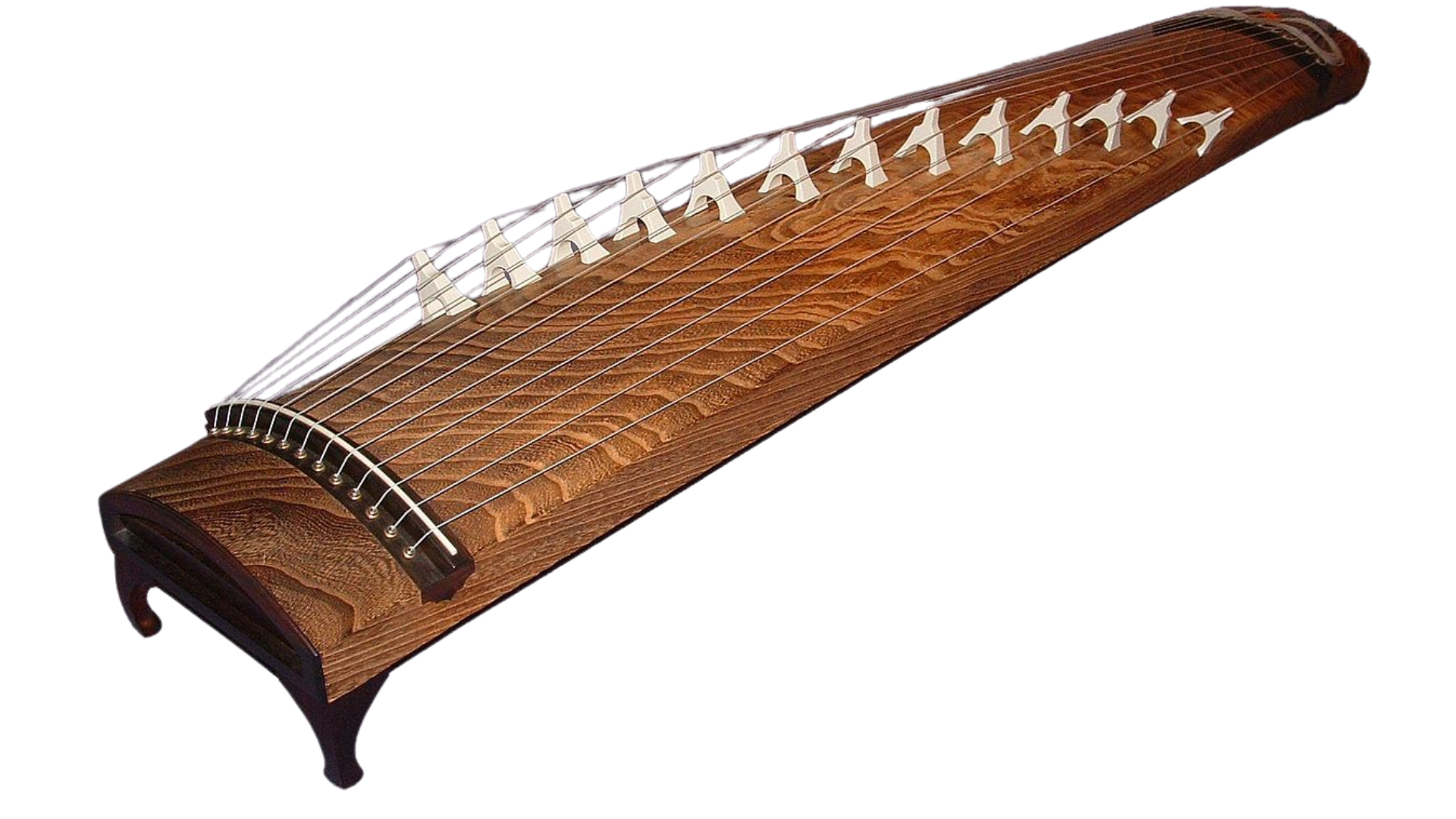
The koto is a traditional Japanese stringed instrument characterized by its long, rectangular body. It usually has 13 strings that are plucked using picks worn on the fingers. The koto’s music is classy and deeply connected to Japanese culture.
Fun fact: The koto is often played during traditional tea ceremonies and cultural festivals.
4. Kanun
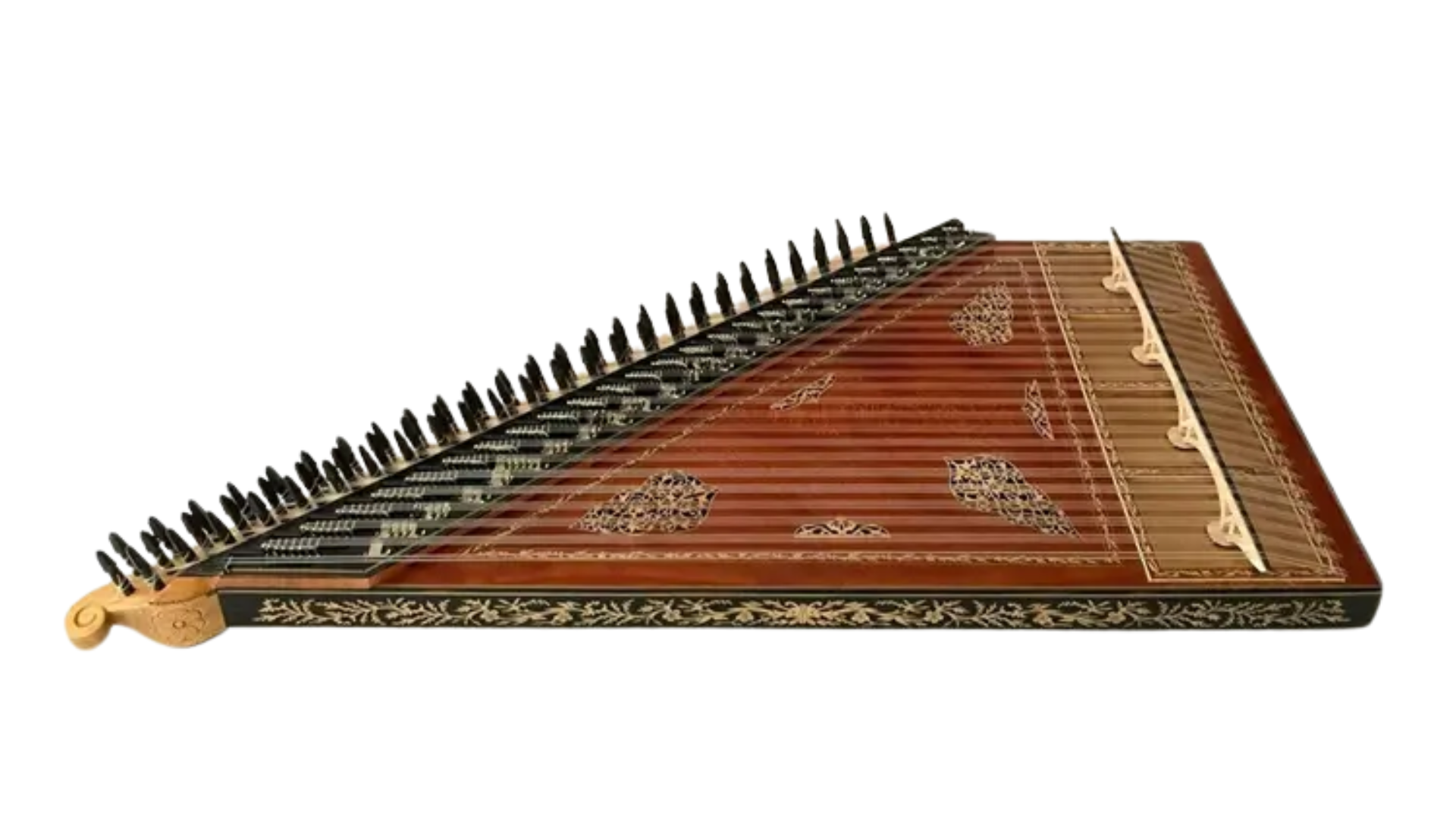
The kanun is a plucked zither popular in Middle Eastern music. It has a trapezoidal shape and features dozens of strings that produce bright, delicate tones. Musicians play it, resting on their knees or a table.
Fun fact: Skilled kanun players adjust microtones using tiny levers while playing live.
5. Krar
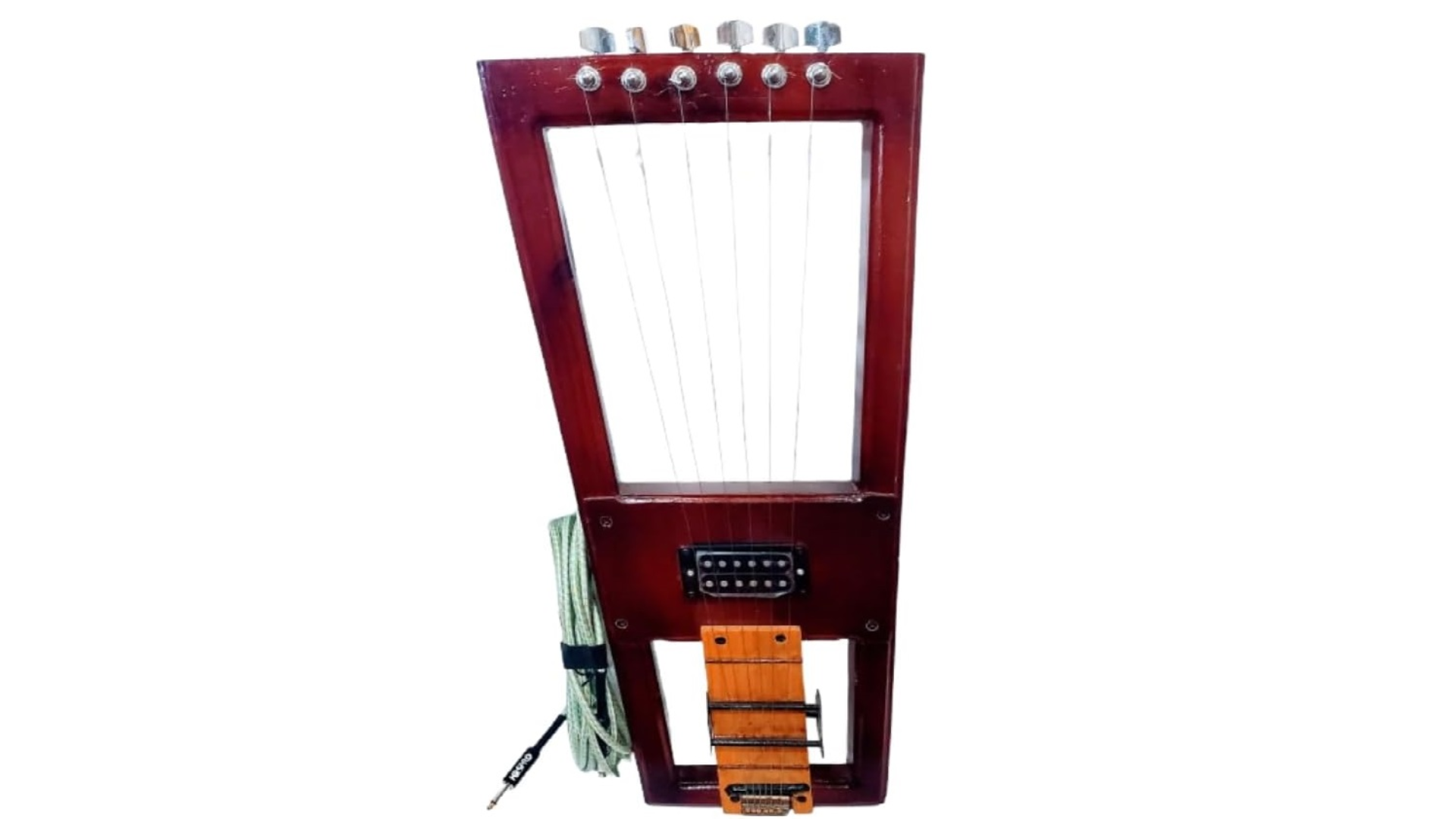
The krar is a traditional Ethiopian lyre with five or six strings. It’s commonly used in folk songs and storytelling performances. Its warm sound brings people together for dances and celebrations.
Fun fact: The krar can be played in both a plucked style and strummed, similar to a guitar.
6. Kulintang
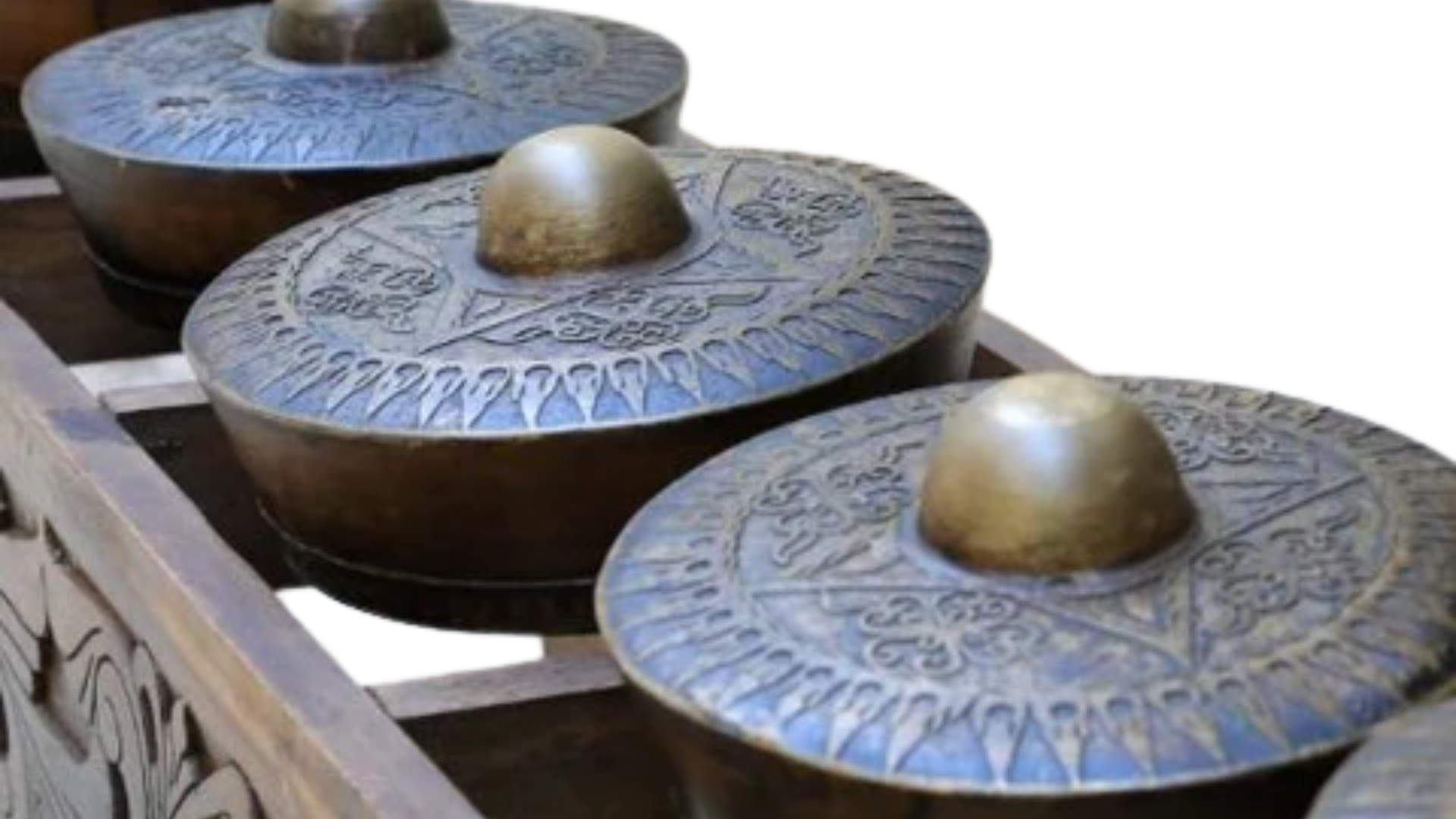
The kulintang is an ancient set of gongs laid horizontally on a frame. It’s central to traditional music in the southern Philippines, as well as in parts of Malaysia and Indonesia. Players strike the gongs in rapid sequences, creating rhythmic melodies.
Fun fact: Kulintang music is often performed at community gatherings and festivals to encourage social bonding.
7. Kagurabue
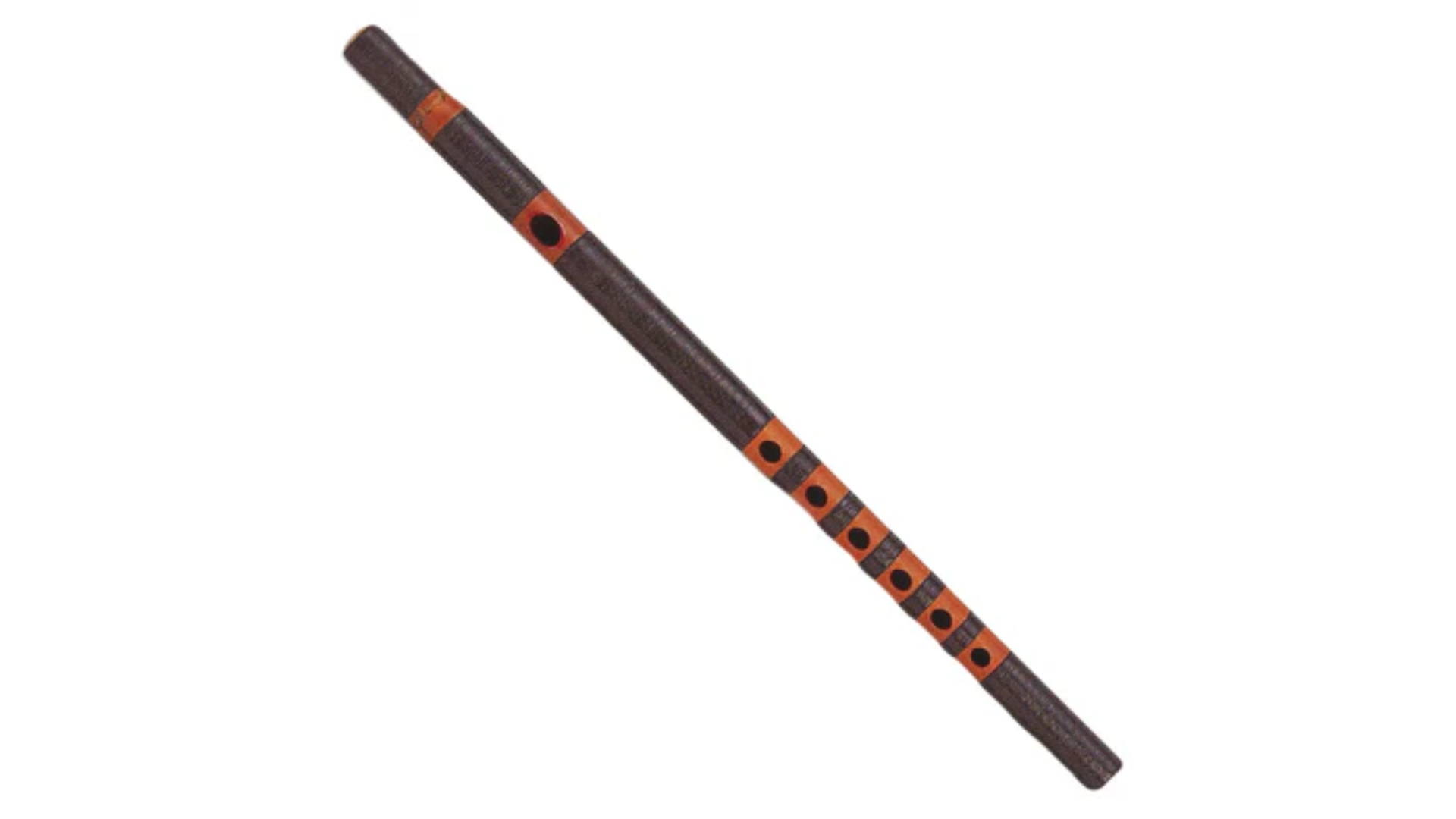
The kagurabue is a sacred Japanese flute made of bamboo. It’s used in Shinto rituals and traditional dances called kagura. Its haunting, airy notes are meant to connect the human and spiritual worlds.
Fun fact: The kagurabue is still handcrafted today using traditional techniques passed down through generations.
8. Khene
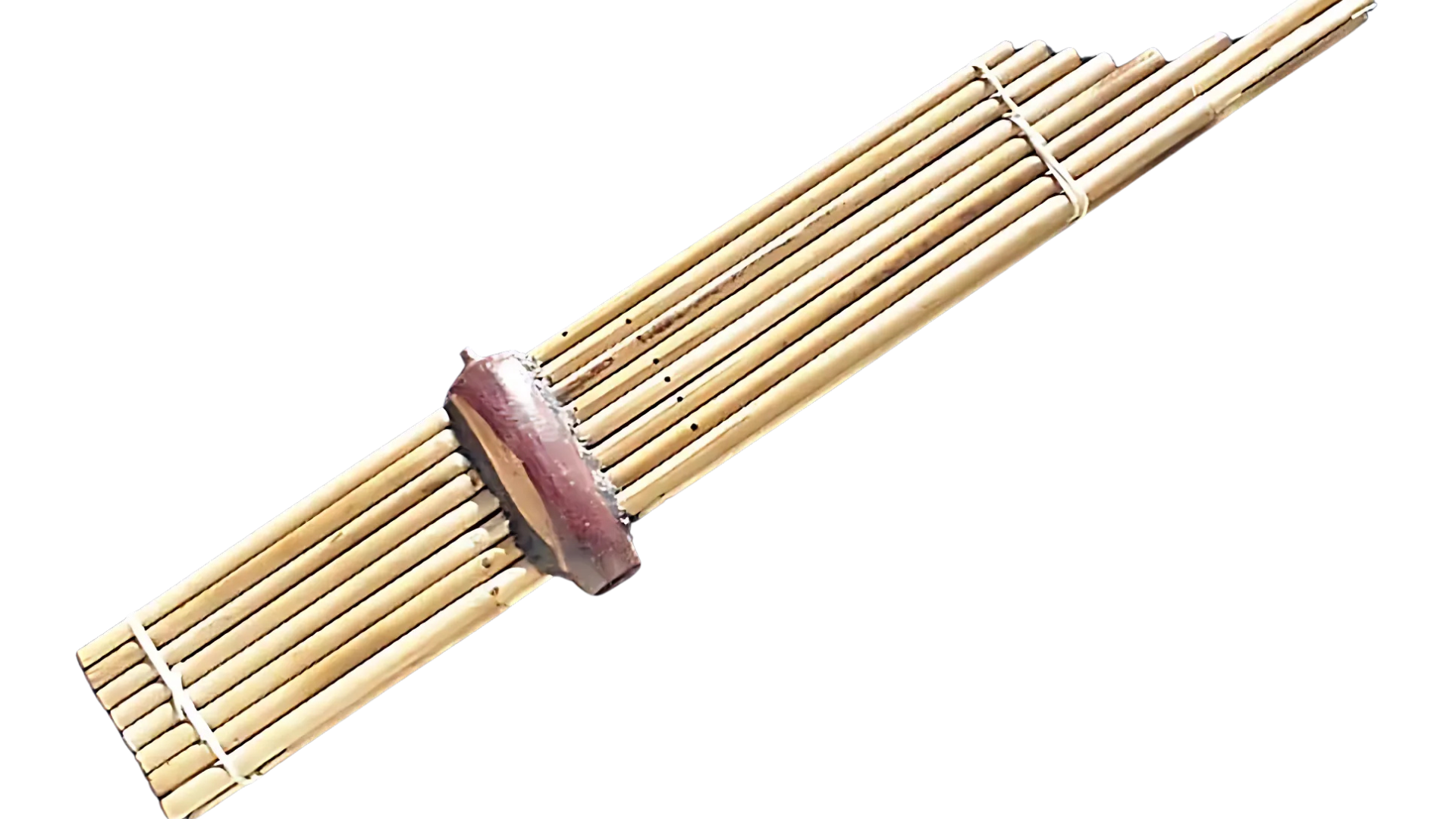
The khene is a mouth organ from Laos and northeastern Thailand. It’s made of bamboo pipes of different lengths connected to a wooden wind chamber. Its drone-like sound supports folk singing and dancing.
Fun fact: The khene is often referred to as the “soul of Lao music” and is recognized by UNESCO as a cultural heritage.
9. Komungo
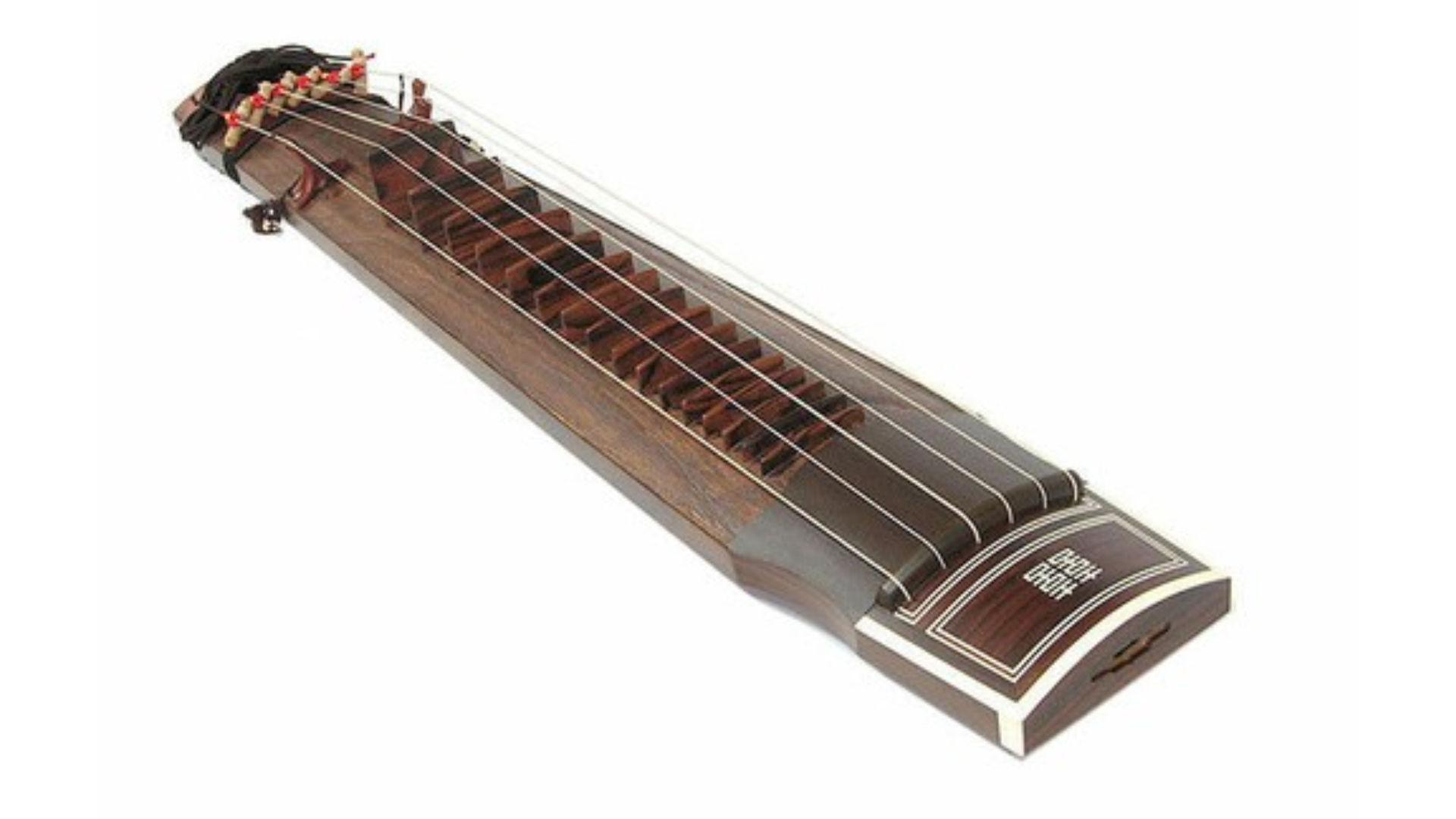
The komungo, also known as the geomungo, is an ancient Korean zither featuring six silk strings. Players pluck and strike the strings with a slender bamboo stick called a suldae. Its deep, resonant sound is favored in scholarly and court music.
Fun fact: The komungo was believed to be invented by a Goguryeo king in the 4th century.
10. Klong Yao

The klong yao is a traditional Thai long drum often played in parades and festivals. It’s carried over the shoulder with a strap while the drummer walks and beats the drum rhythmically. Its lively beats energize celebrations and village events.
Fun fact: The klong yao’s drumhead is usually made from water buffalo skin for durability and tone.
11. Kudu Horn
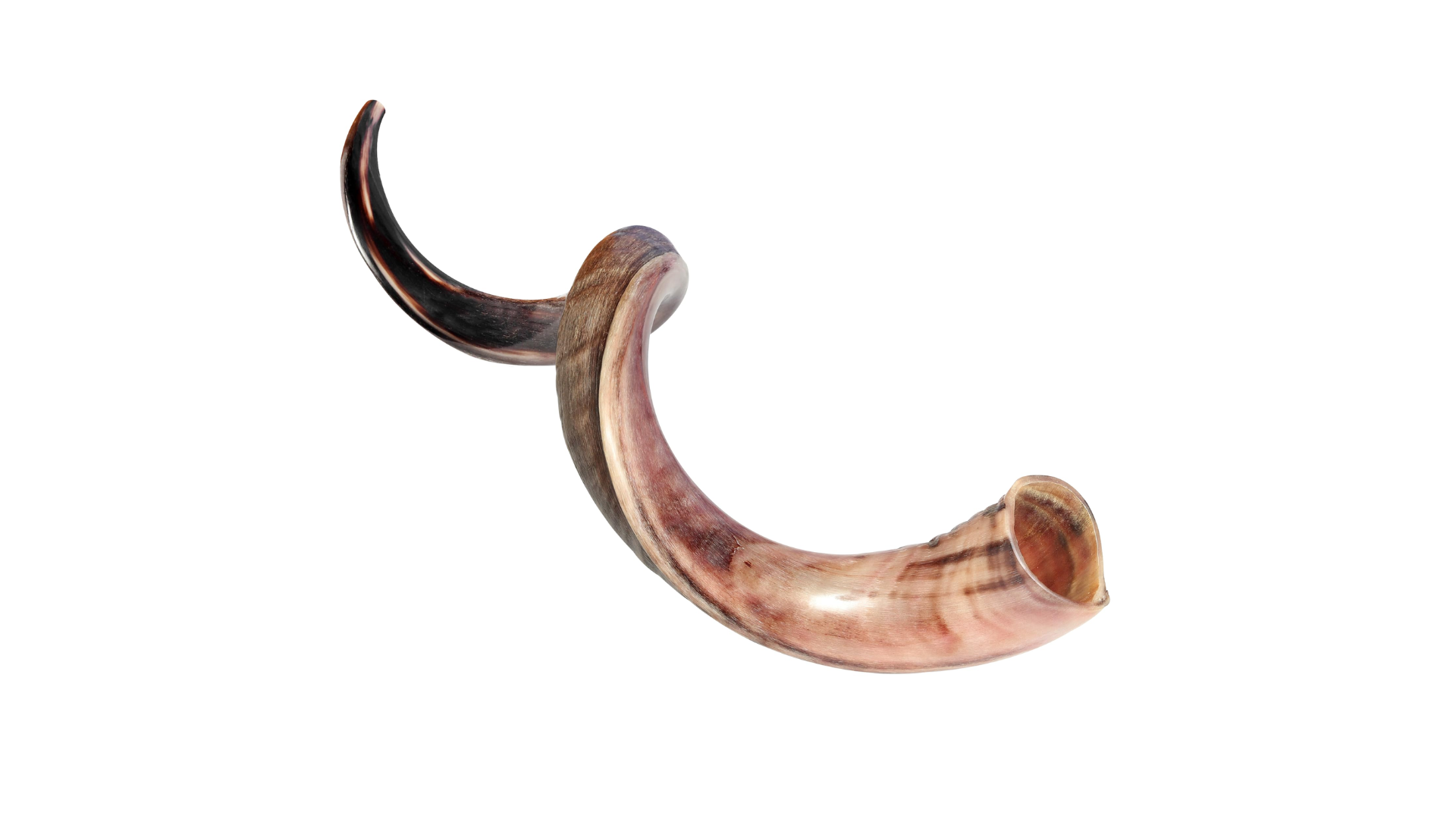
The kudu horn is a wind instrument made from the horn of the kudu antelope. Various African tribes use it for signaling and ceremonial purposes. When blown, it produces a deep, resonant sound that can carry far distances.
Fun fact: The kudu horn is sometimes decorated with carvings and beads to reflect tribal identity.
12. Kouxian
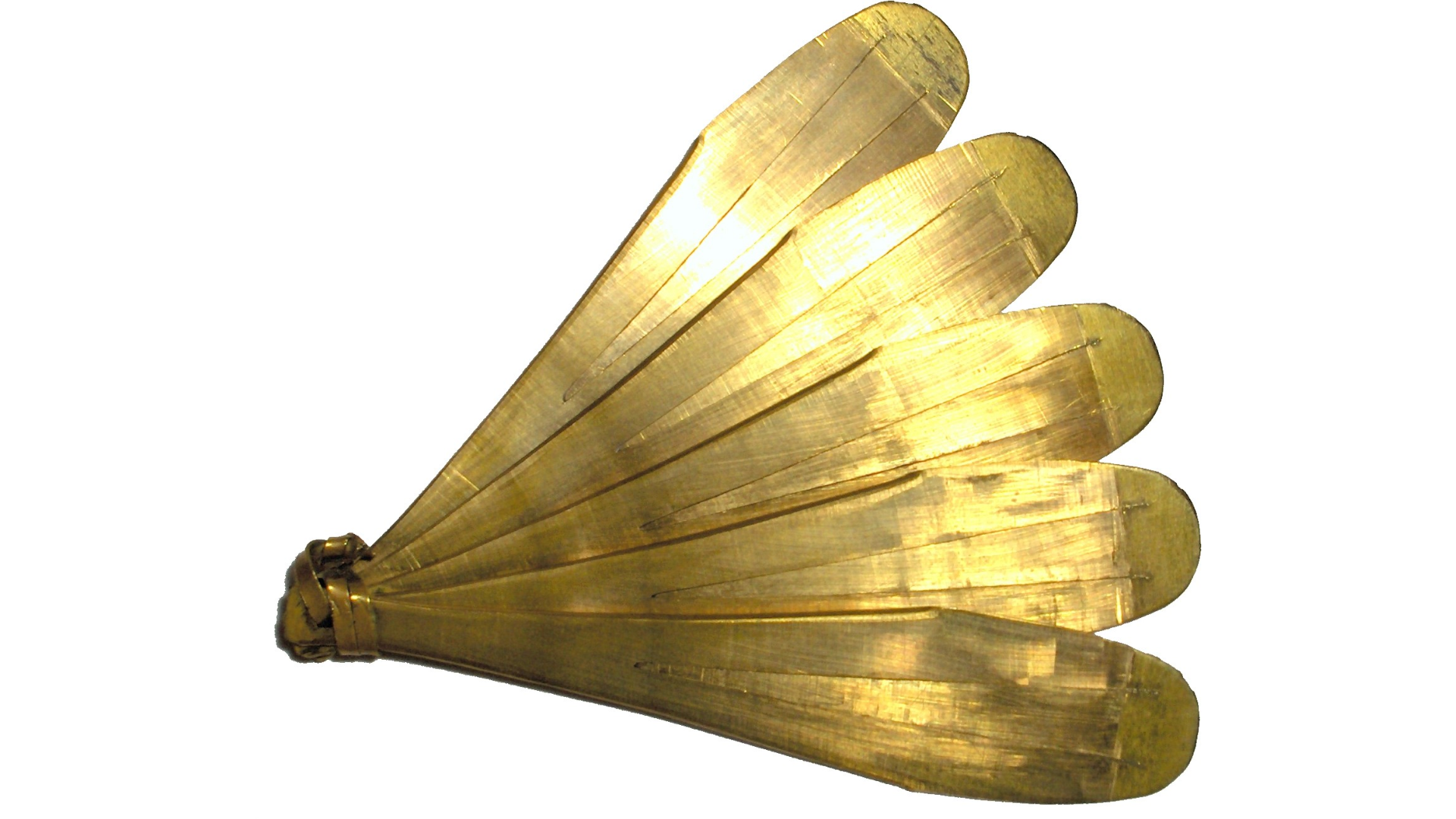
The kouxian is a traditional Chinese jaw harp made of thin metal tongues. It’s played by placing it between the lips and plucking to create a twanging, rhythmic tone. It’s popular among several ethnic groups in China.
Fun fact: Skilled kouxian players can mimic birdsong and human speech-like effects.
13. Kayamb
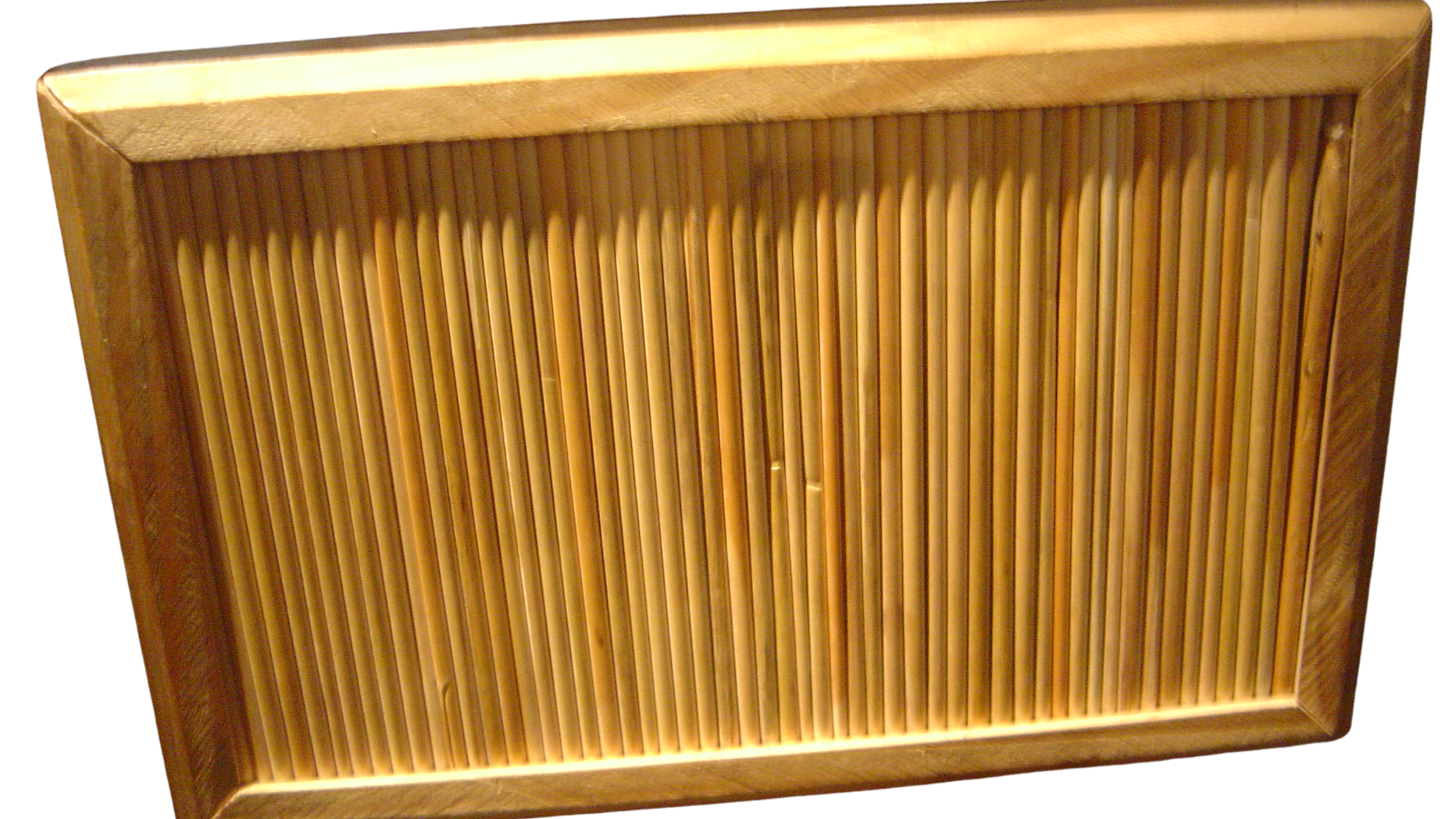
The kayamb is a flat rattle instrument from the islands of the Indian Ocean, especially Mauritius and Réunion. It’s made of reeds or sugarcane tubes filled with seeds. Shaking it produces a crisp, percussive sound that adds drive to sega music.
Fun fact: The kayamb is shaken in both horizontal and vertical movements to create complex rhythms.
14. Kudyapi
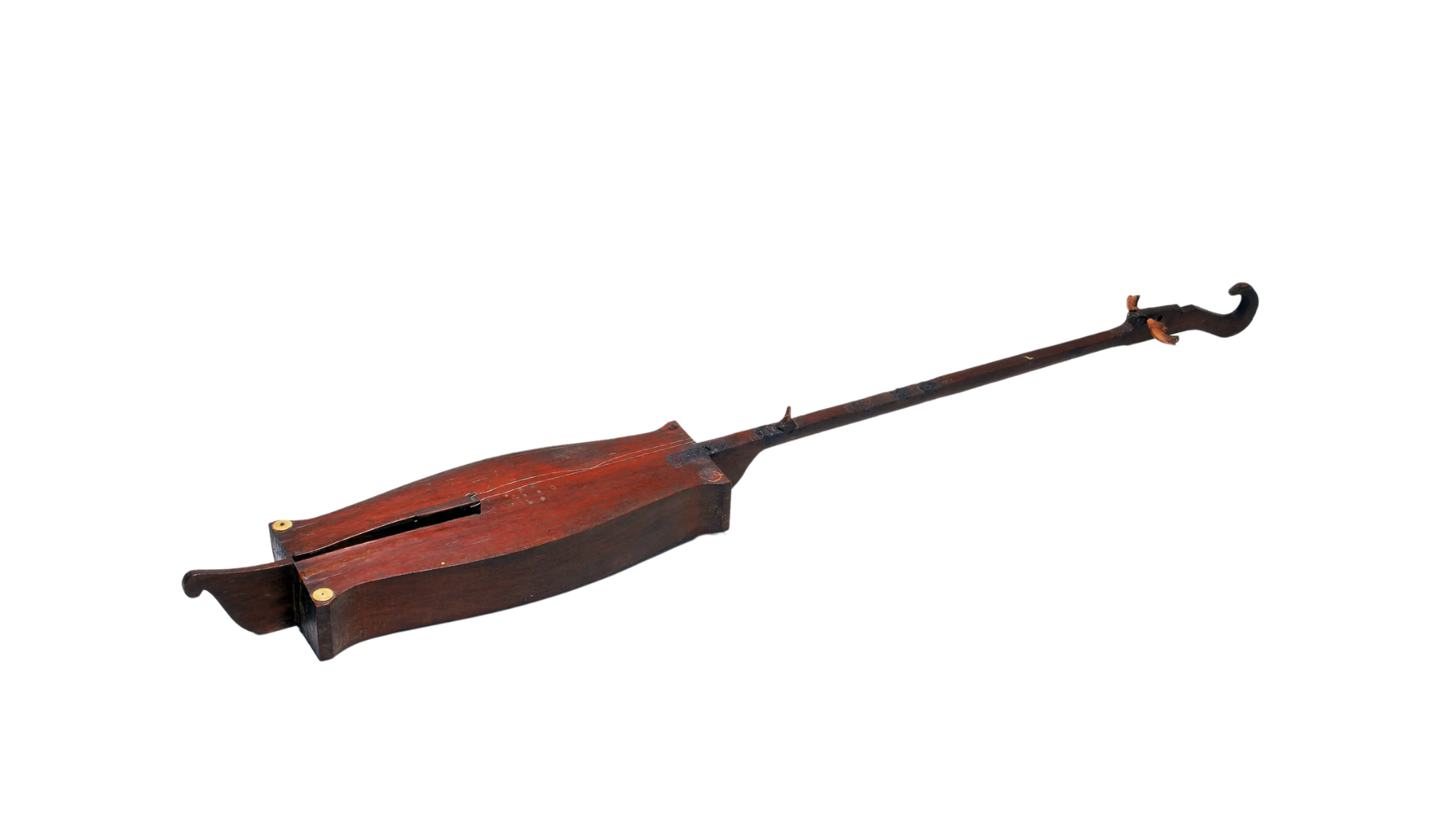
The kudyapi is a Philippine boat-lute with two strings and a carved wooden body. Traditionally used by various indigenous groups, it’s played for storytelling and courtship. Its soft, mellow sound makes it perfect for solo performances.
Fun fact: The kudyapi is often decorated with intricate carvings representing local folklore.
15. Kinnera
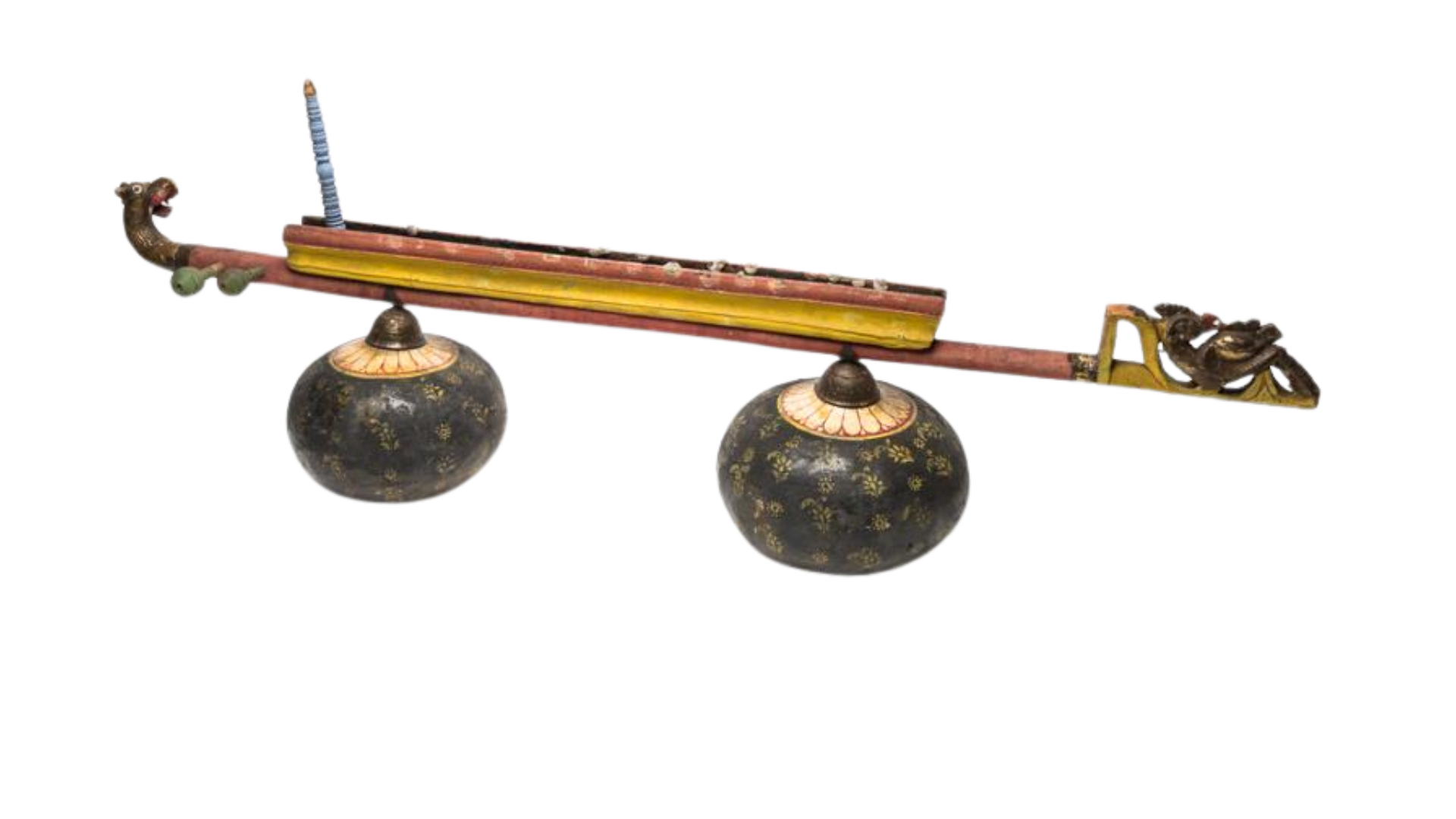
The kinnera is a rare stringed instrument from the Deccan Plateau in India. It’s made with a long neck and hollow gourds as resonators. Played by tribal musicians, it’s used to sing ballads and folk tales.
Fun fact: The kinnera is known for its unique sliding tones, which resemble vocal inflections.
16. Kpanlogo Drum
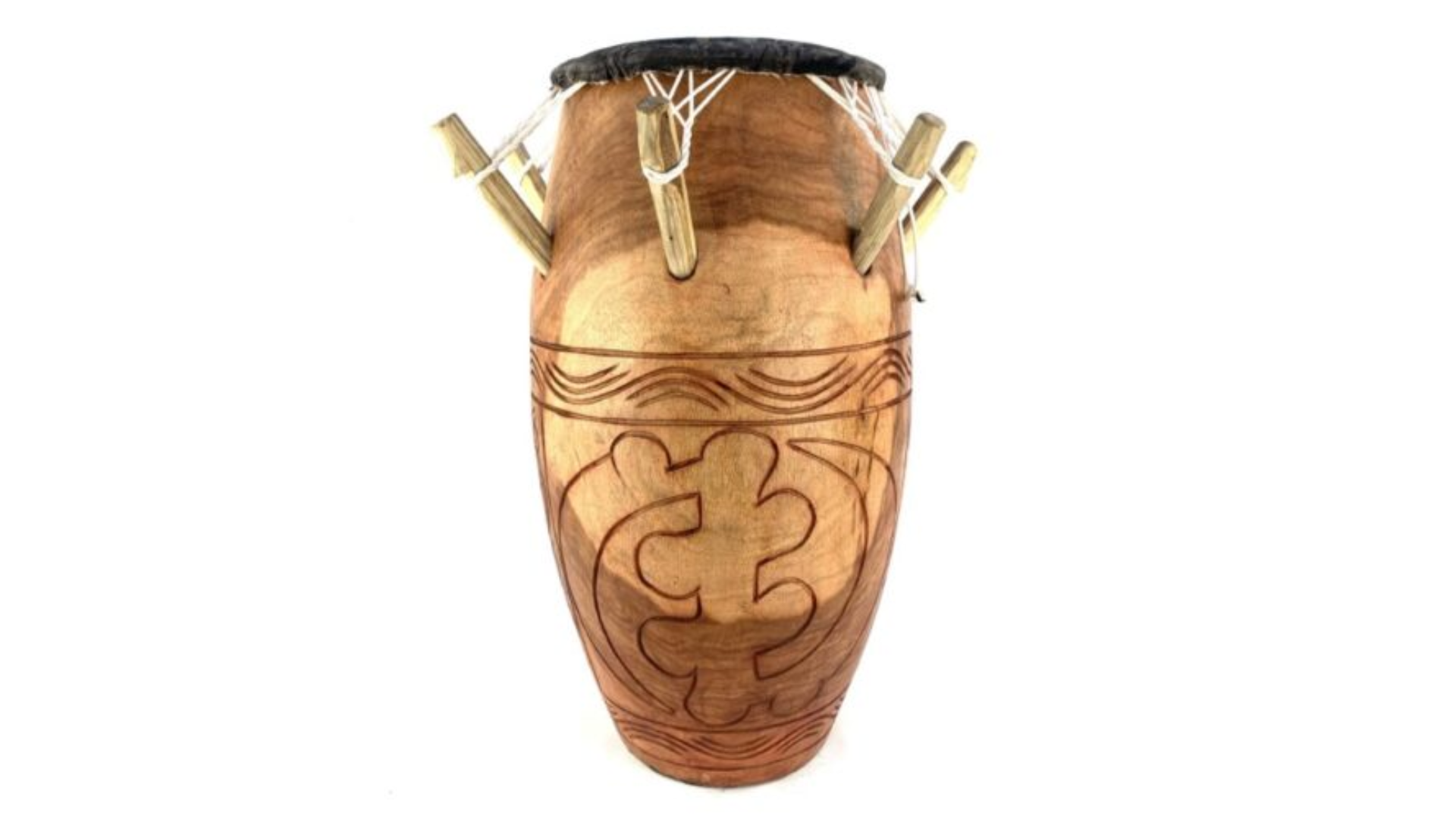
The kpanlogo drum is a traditional hand drum from Ghana, central to the kpanlogo dance and music style. It’s barrel-shaped and played with bare hands to create energetic rhythms. It brings communities together during festivities and storytelling.
Fun fact: The kpanlogo is often played in an ensemble with other drums and bells to form layered beats.
17. Kamancheh
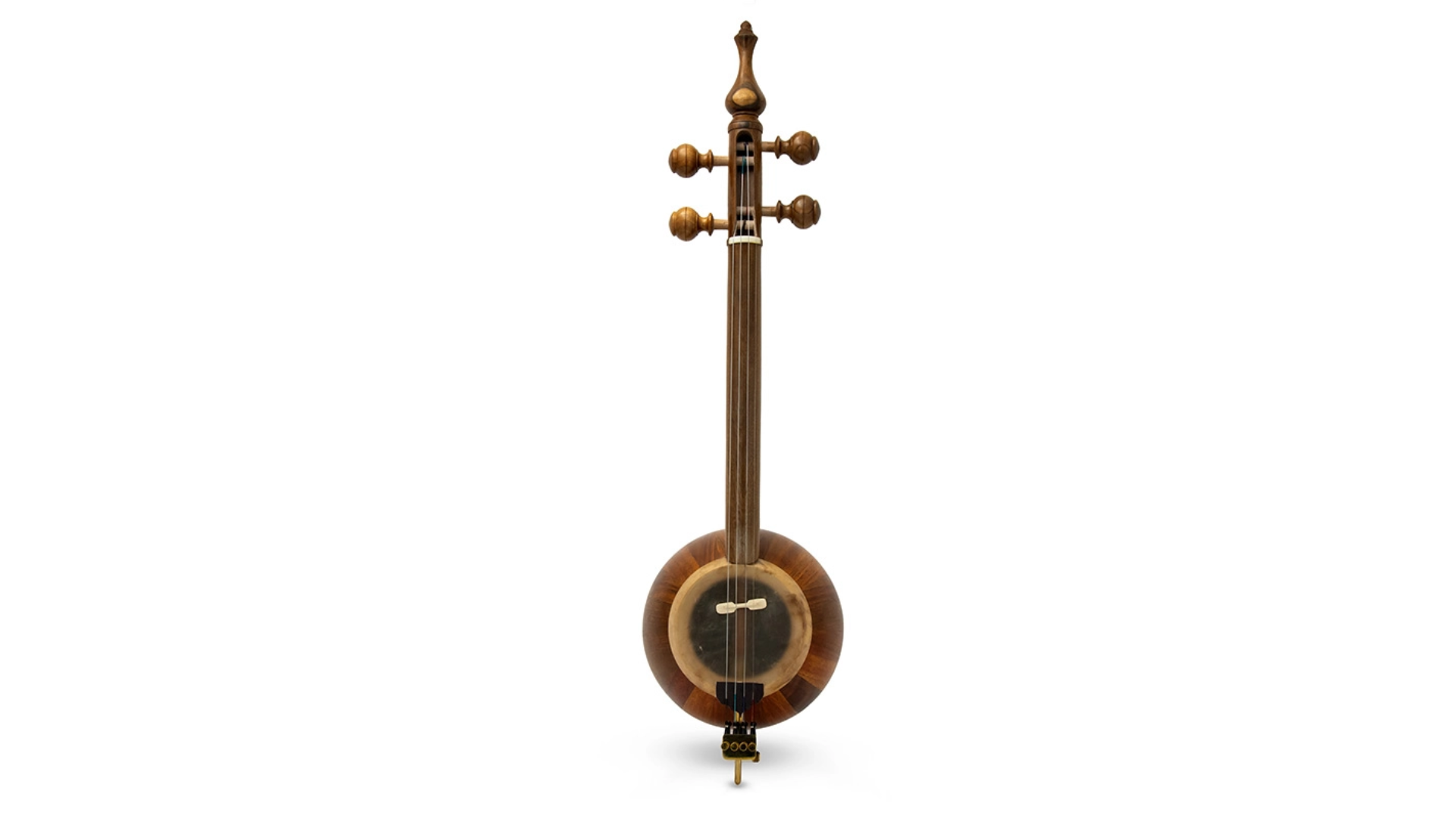
The kamancheh is a Persian bowed string instrument similar to a spike fiddle. It has a small, round body covered with animal skin and a long neck. Its soulful sound is a staple in Persian classical and folk music.
Fun fact: The kamancheh’s bow is traditionally held underhand, which allows expressive playing.
18. Klong Khaek
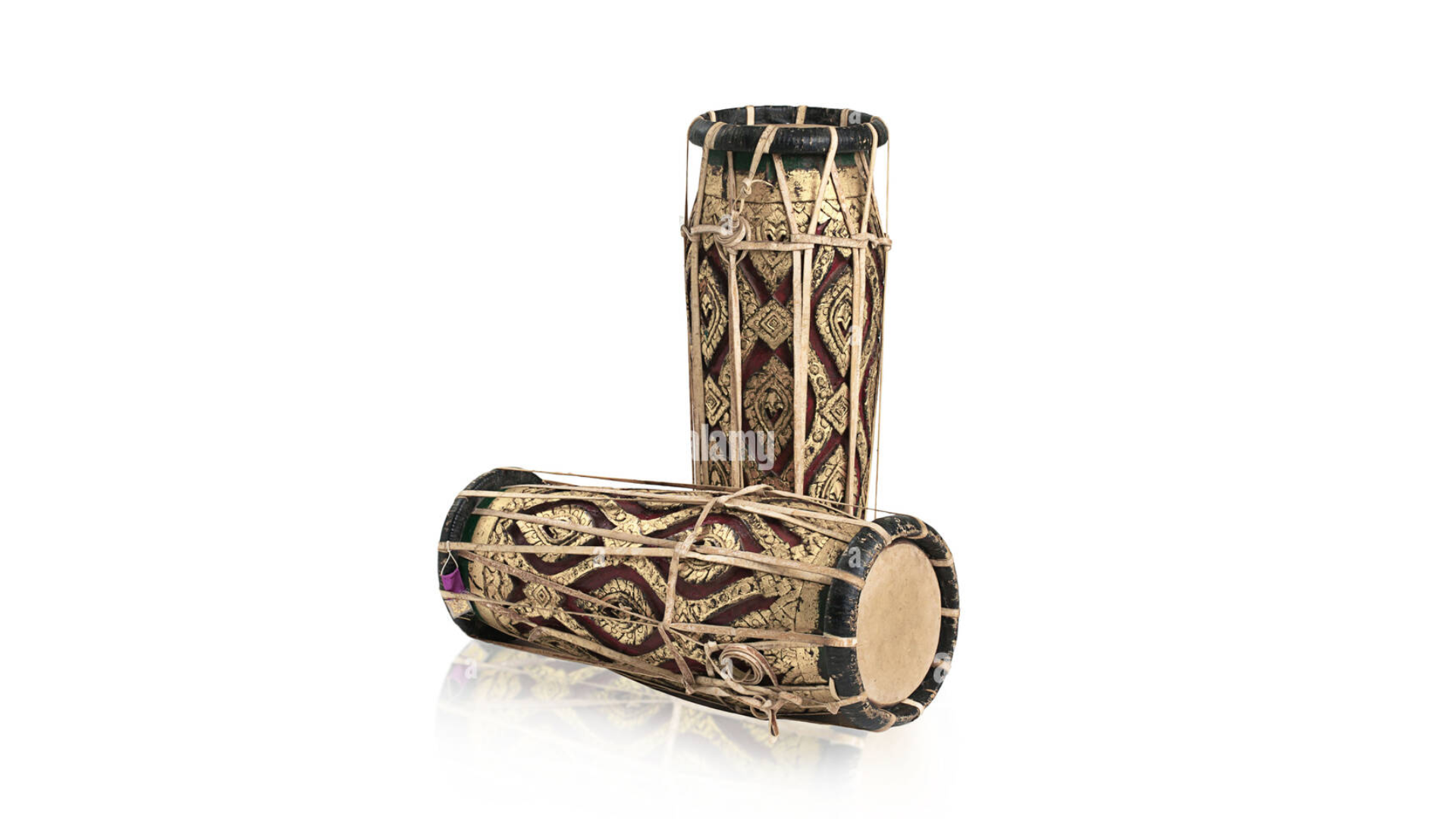
The klong khaek is a pair of barrel drums used in Thai classical music. They come in male and female pairs, each producing slightly different tones. They are played with hands and help set rhythmic cycles in traditional ensembles.
Fun fact: Klong Khaek drums are believed to have cultural connections with Indian and Cambodian drum traditions.
19. Khol
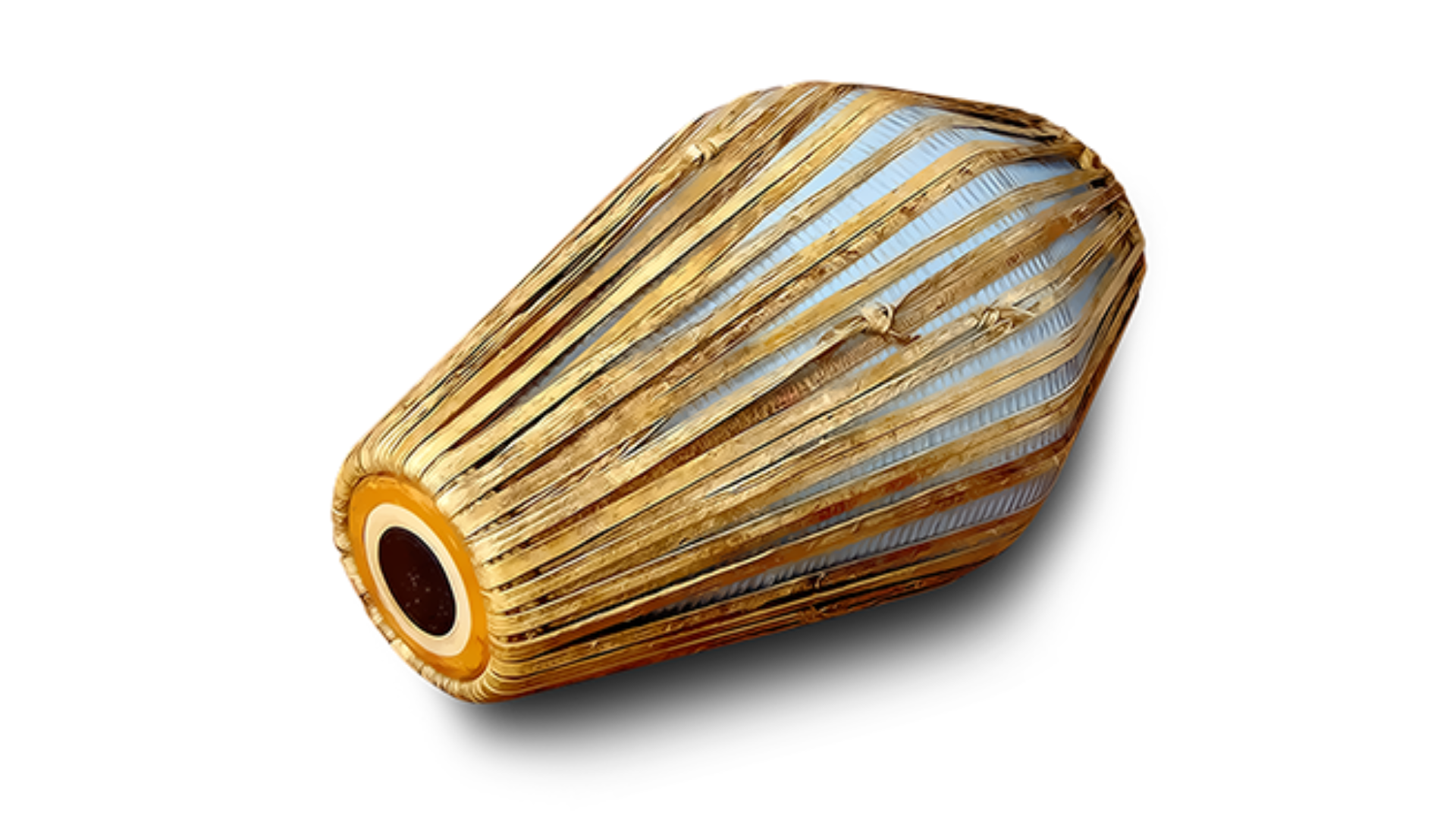
The khol is a double-sided clay drum widely used in devotional music in India, especially Bengal and Assam. It produces high-pitched treble sounds on one side and deep bass on the other. It’s vital in kirtan performances praising deities.
Fun fact: The khol’s body is often beautifully painted with natural dyes and traditional motifs.
20. Kudu Drum
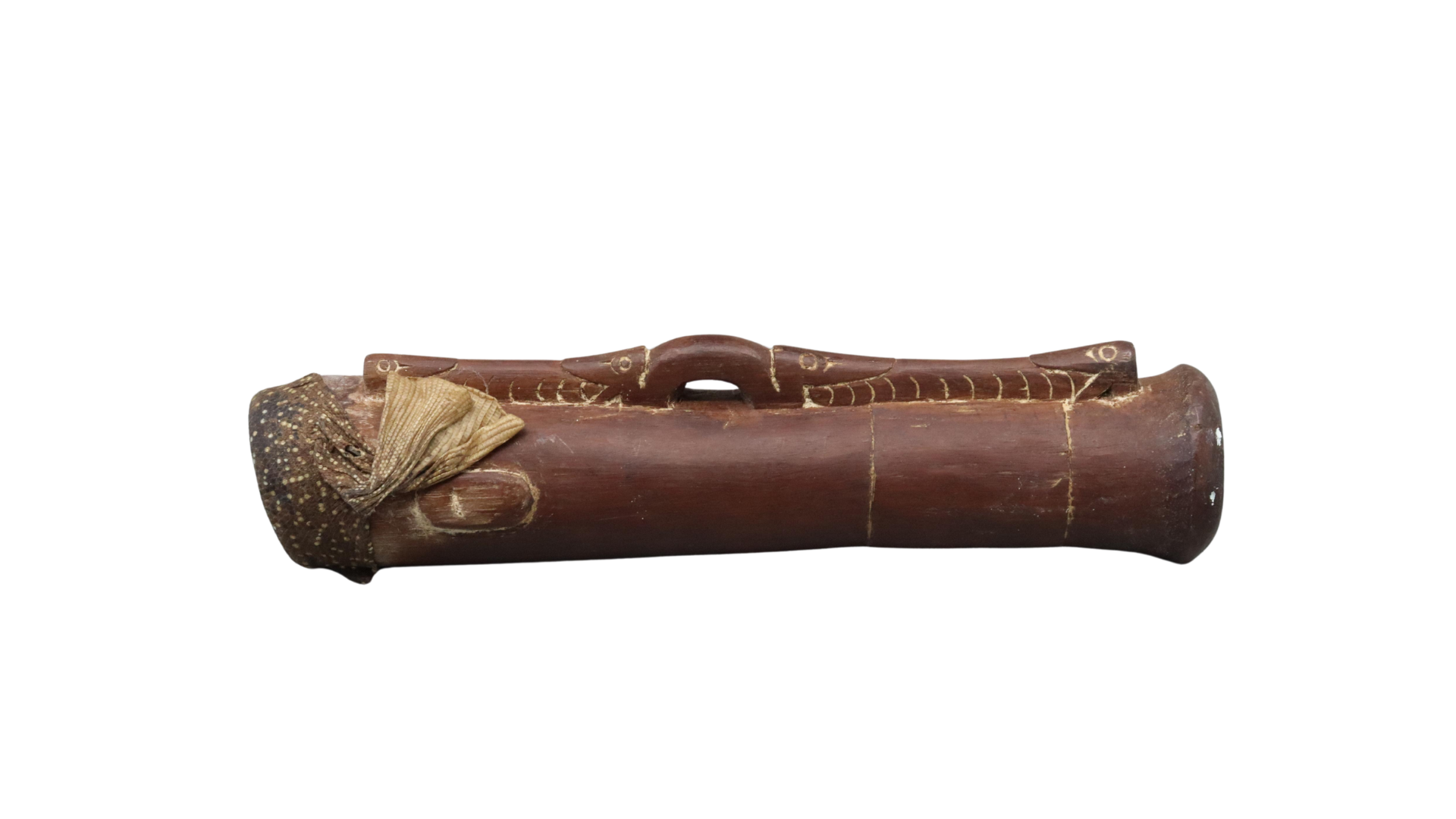
The kudu drum is an African drum named after the kudu antelope, whose hide is sometimes used for the drumhead. It produces warm, deep bass notes and is used in tribal dances and storytelling.
Fun fact: Kudu drums are often played alongside other African drums like djembes and talking drums.
21. Kachapi
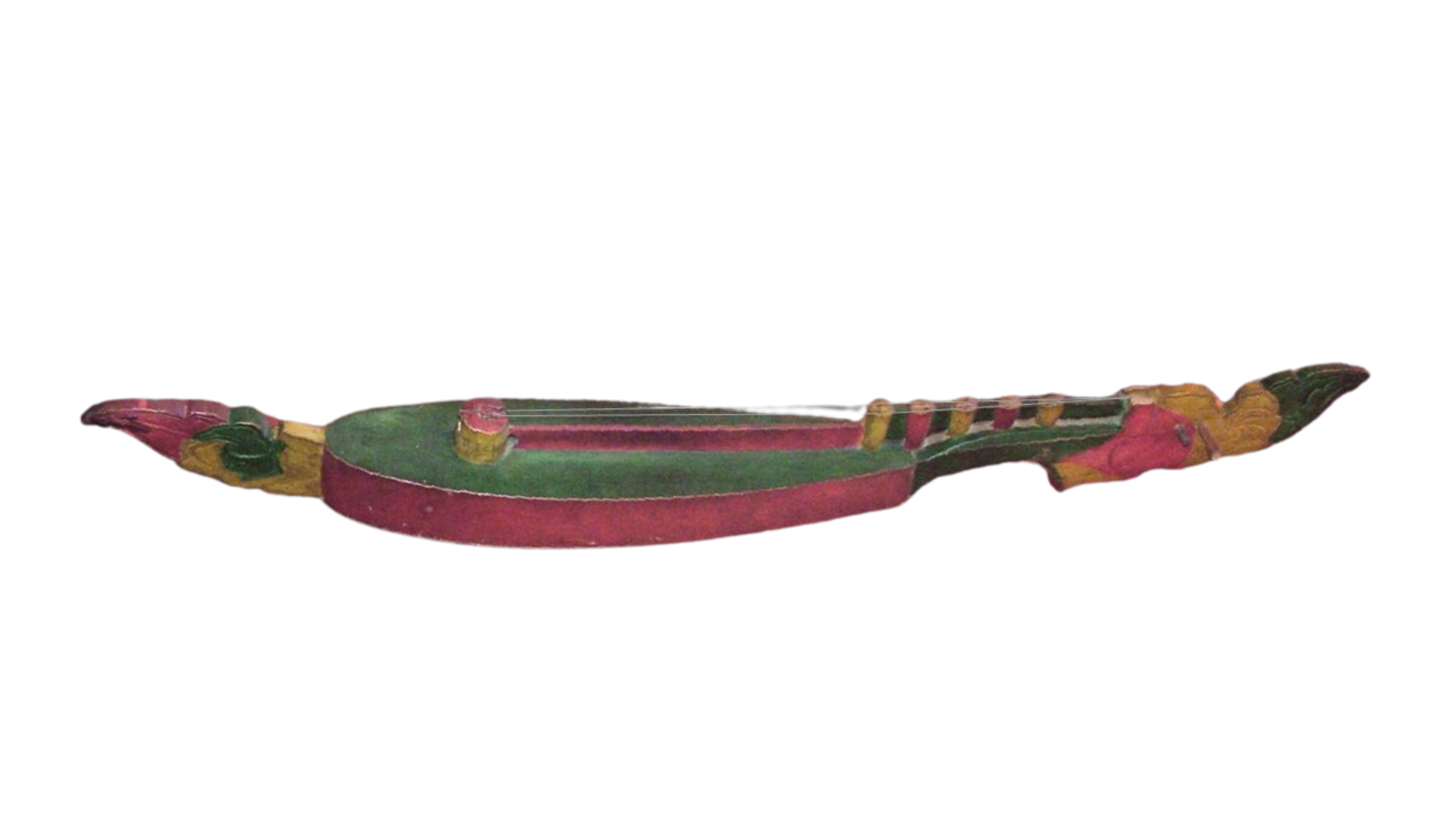
The kachapi is a rare two-stringed lute found in the northern Philippines and among indigenous groups in Mindanao. Its gentle plucked notes accompany local legends and ceremonial chants.
Fun fact: The instrument’s design symbolizes a boat, representing journeys and migration stories.
22. Kengong
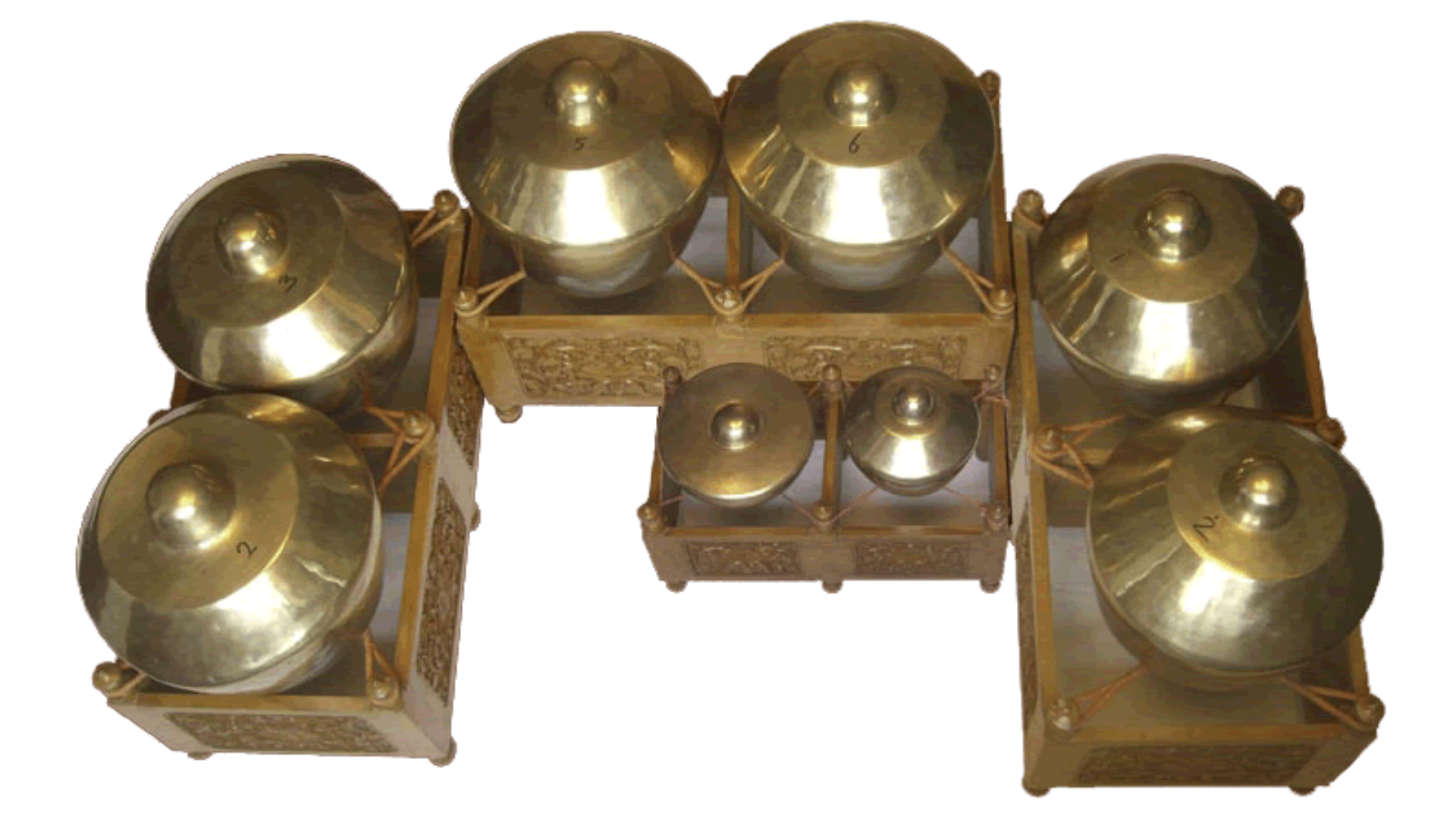
The kengong is a bronze percussion instrument used in Balinese gamelan music. It’s a small kettle gong that helps punctuate melodies with bright, resonant hits. It works closely with other gongs to maintain the ensemble’s synchronization.
Fun fact: In a full gamelan, multiple kengong gongs are tuned to different pitches for rich layering.
23. Kanklės
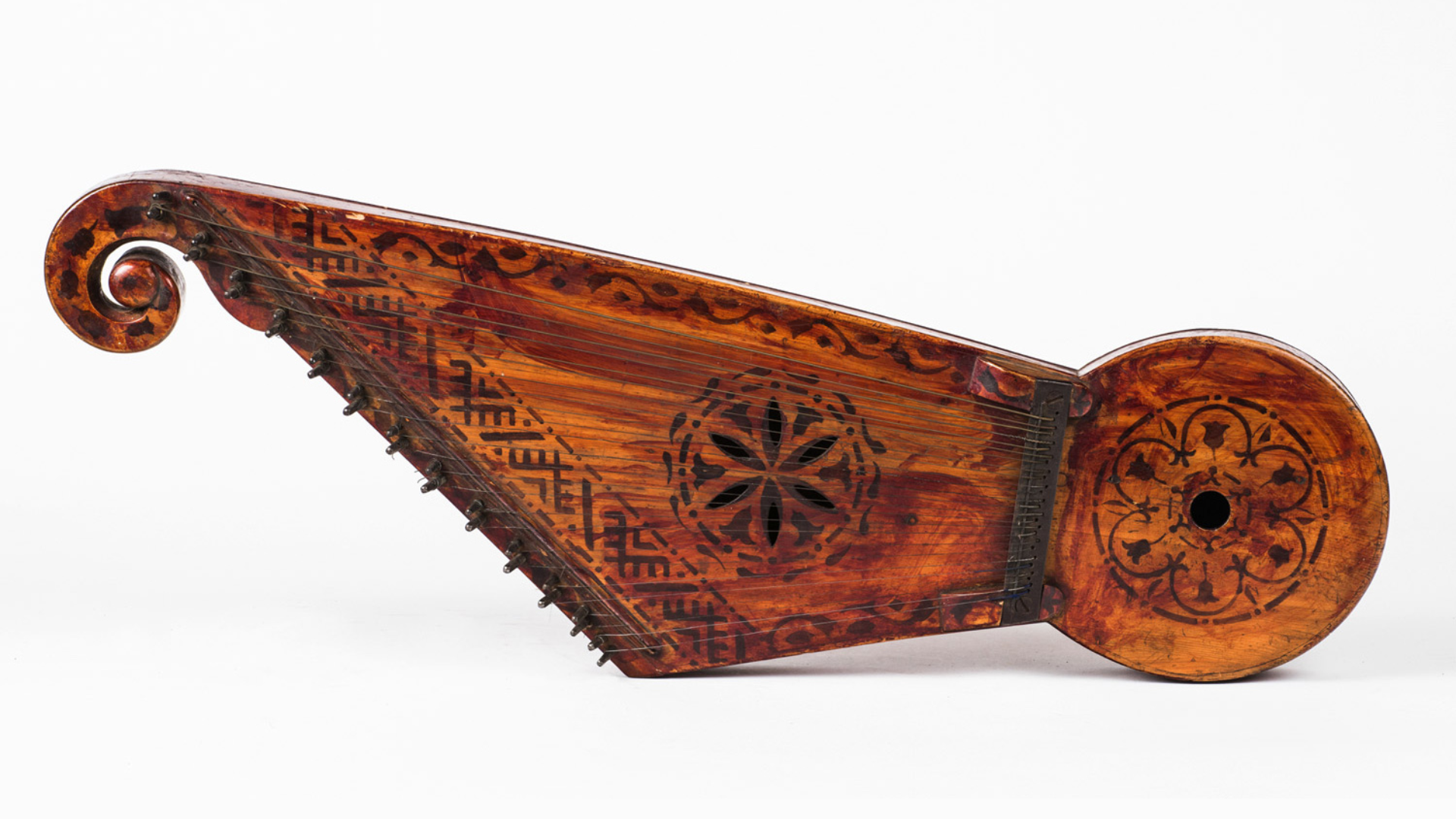
The kanklės is a traditional Lithuanian plucked zither, often considered a symbol of national identity. It features a flat wooden body with strings stretched across it, played while sitting on the lap. Its gentle tones accompany folk songs and dances.
Fun fact: Modern kanklės can have extra strings for a wider range than historical versions.
24. Karinding
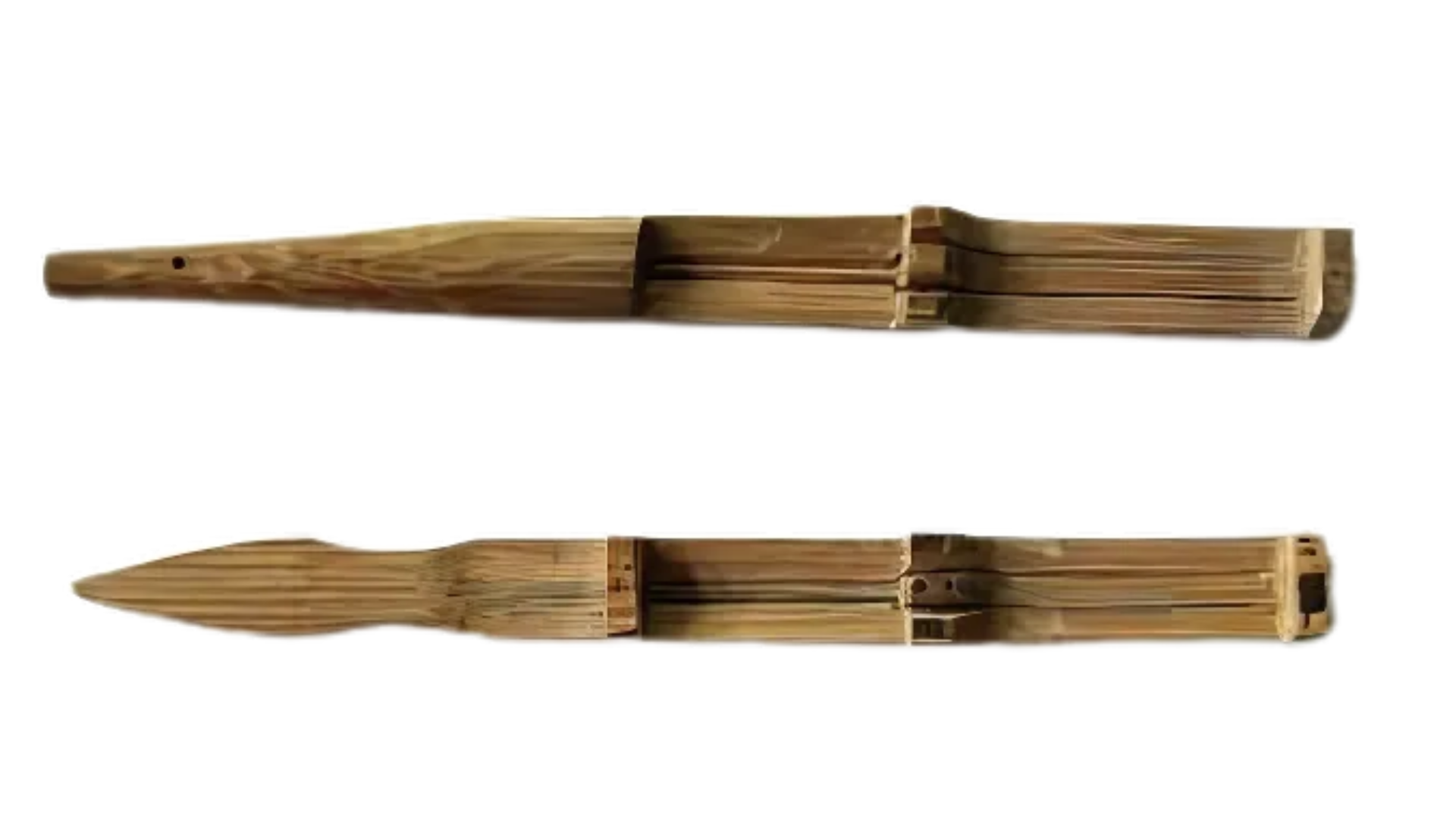
The karinding is a Sundanese bamboo jaw harp from West Java, Indonesia. Played by plucking while holding it against the lips, it creates a buzzing, rhythmic sound. Traditionally, it was used by farmers to ward off pests in rice fields.
Fun fact: Some karinding players can produce melodies that imitate the sounds of insects and birds.
25. Koudi
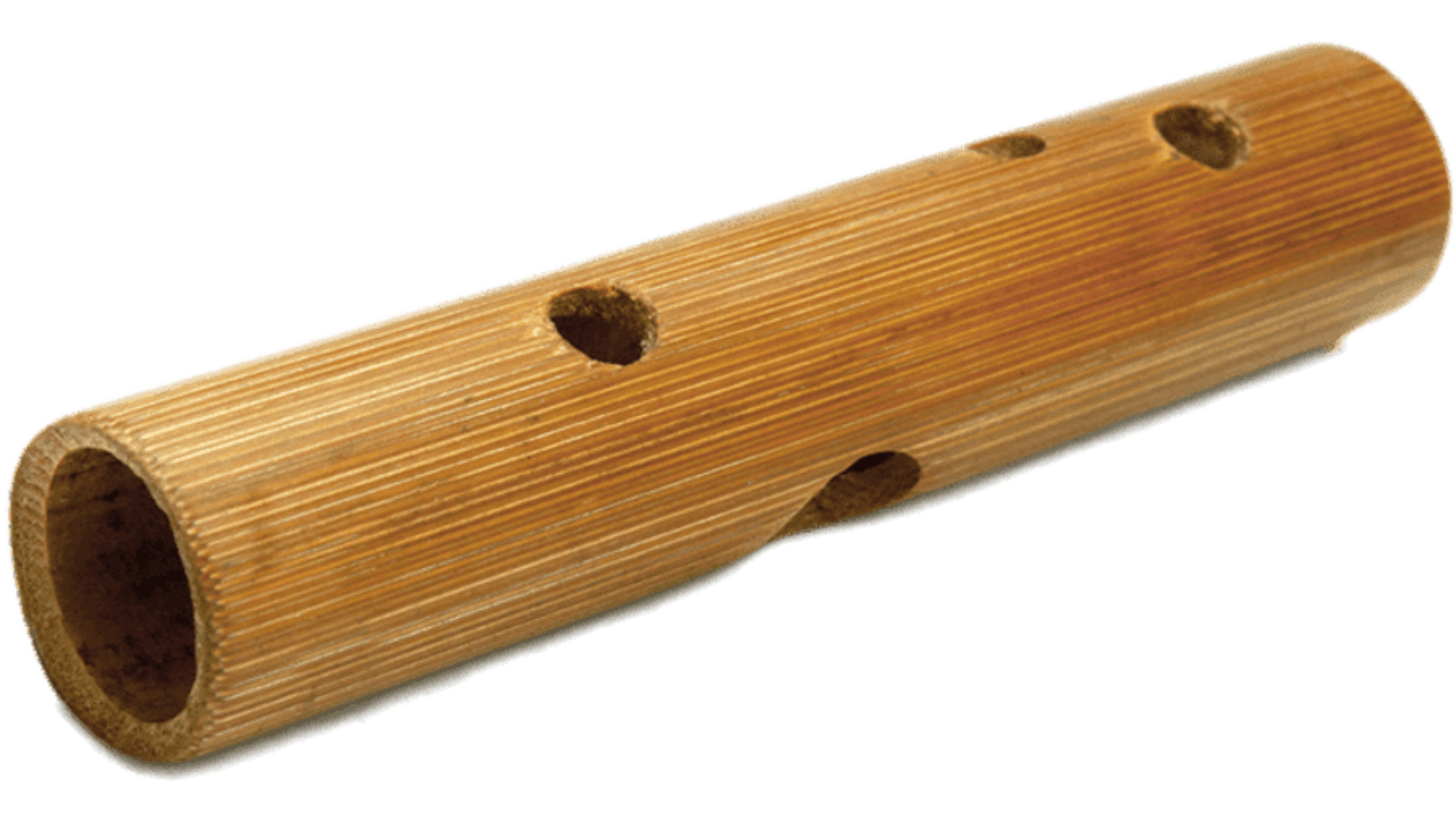
The koudi is a tiny Chinese bamboo flute, famous for its high-pitched, bird-like notes. Despite its small size, it requires precise breath control and dexterity with the fingers. It’s often used for playful, nature-inspired passages in Chinese orchestras.
Fun fact: The koudi is the most minor Chinese flute, usually just a few centimeters long.
26. Kotsuzumi
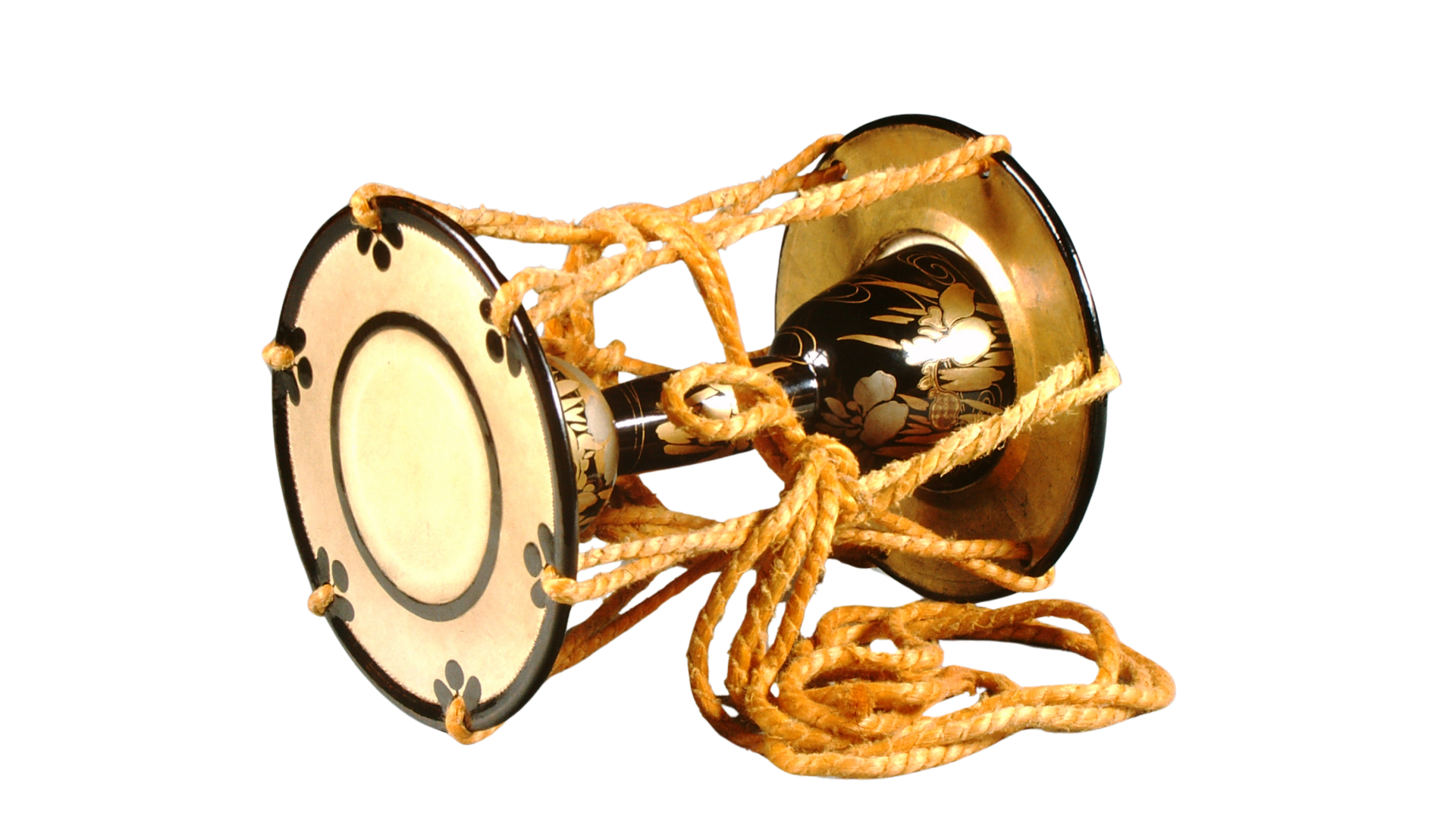
The kotsuzumi is a small Japanese hand drum used in Noh and Kabuki theatre. It’s hourglass-shaped and held on the shoulder, played with bare hands. Its pitch can be varied by squeezing the drum’s cords while playing.
Fun fact: Skilled players can change the drum’s tone mid-performance to match actors’ emotions.
27. K’ni

The k’ni is a rare mouth-resonated fiddle found among the Jarai and Bahnar people of Vietnam and Cambodia. It uses the player’s mouth as a resonator to shape its haunting sound. It’s used for solo melodies and folk storytelling.
Fun fact: The player holds a string to their mouth and hums, blending voice with the fiddle’s notes.
28. Kse Diev
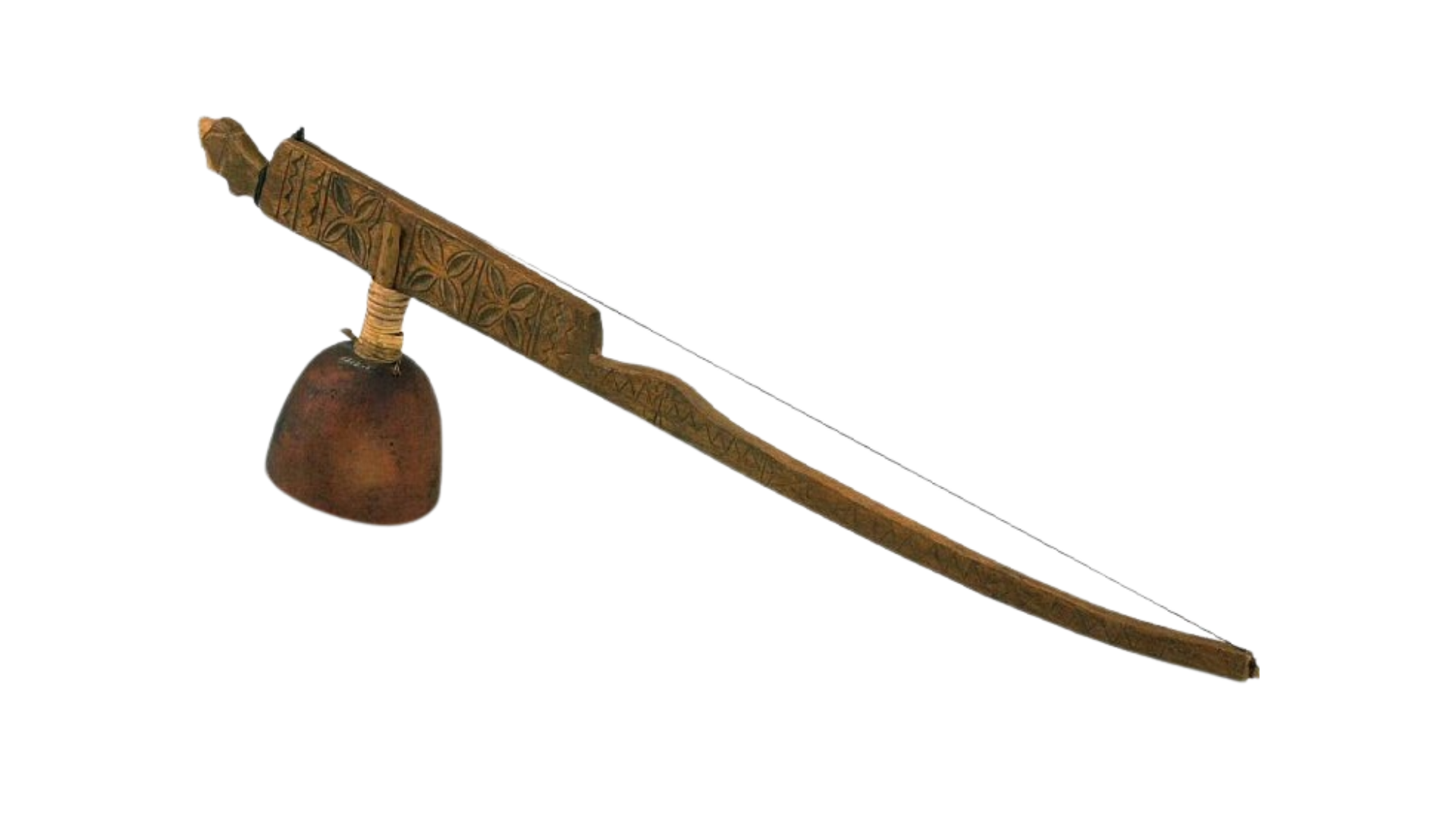
The kse diev is a monochord zither native to Cambodia. It features a single brass string stretched over a gourd resonator and is played by pressing the string with a metal slide. Its mysterious, bending notes are used in ancient ceremonial music.
Fun fact: The kse diev nearly vanished during the Khmer Rouge era, but has seen a revival thanks to master musicians.
29. Krachappi
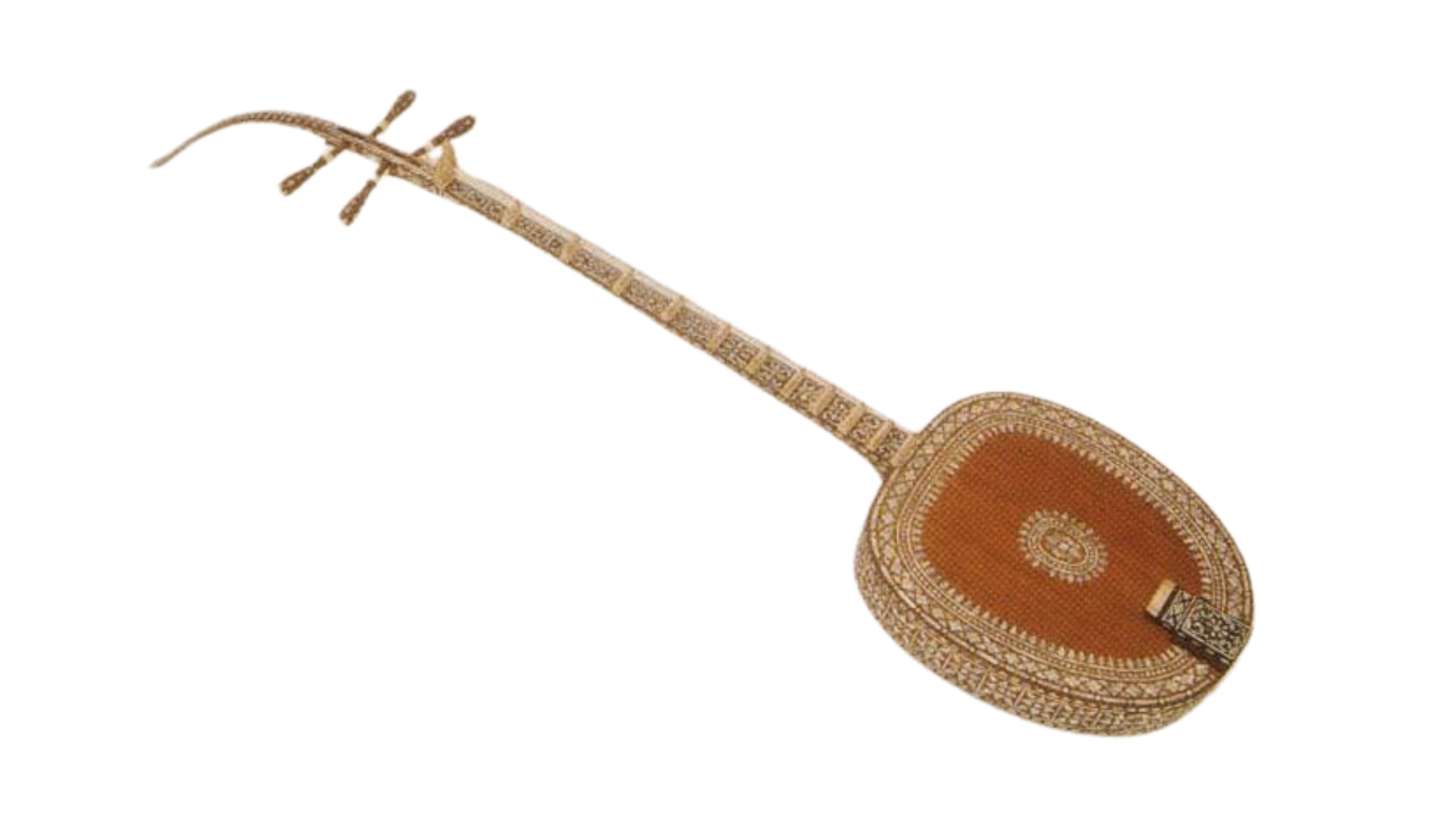
The krachappi is an ancient Thai fretted lute with four strings, now rare but important in Thai classical history. It’s plucked with a plectrum and played solo or with other traditional instruments. It produces soft, lyrical melodies.
Fun fact: Old royal court paintings often depict musicians playing the krachappi.
30. Khaen
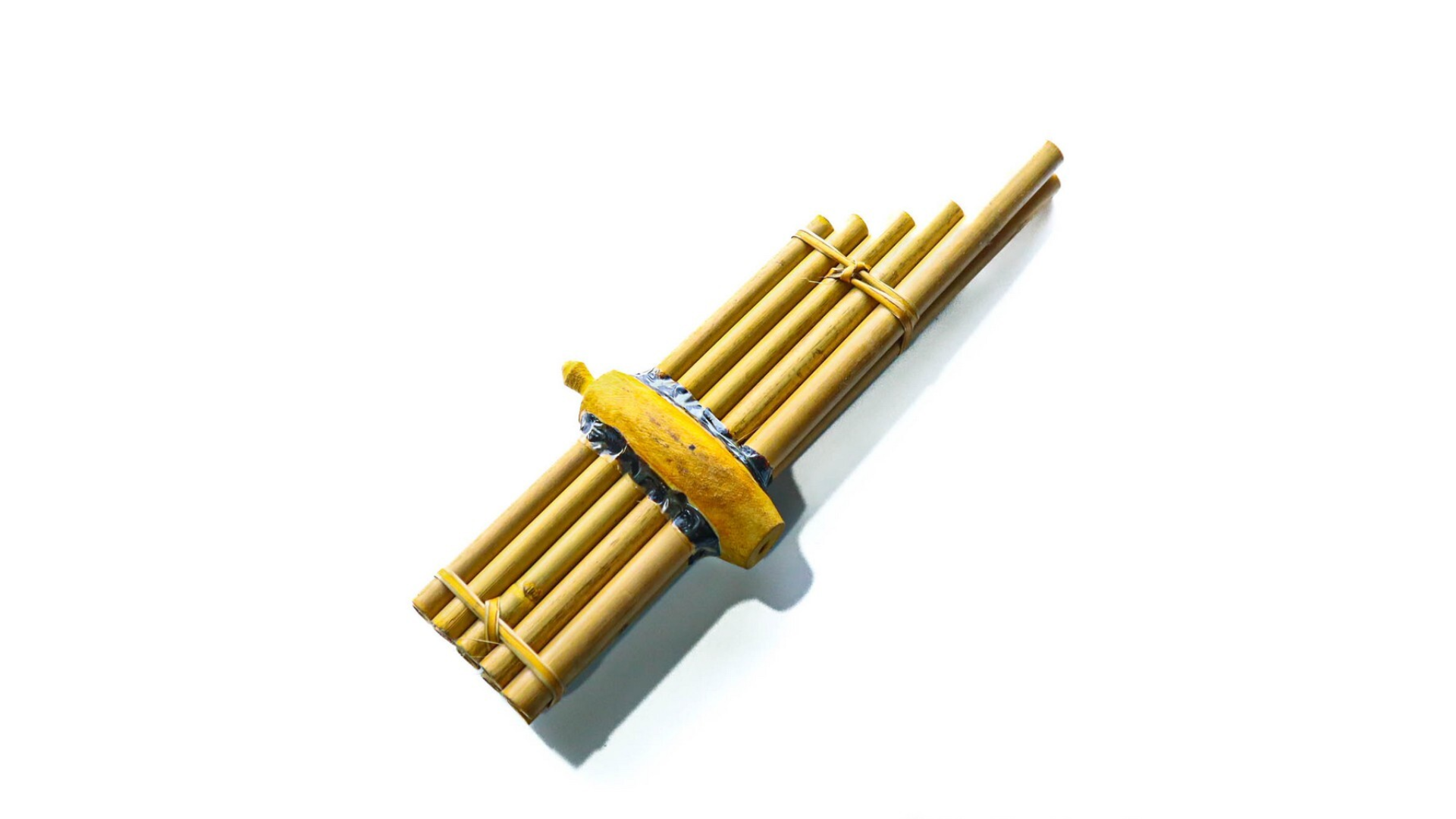
The khaen is a bamboo mouth organ from Laos and Northeast Thailand. It has multiple bamboo pipes connected to a wooden wind chest. Its continuous drone and sweet harmonies are staples in traditional Mor Lam music.
Fun fact: The khaen is often played to accompany lively village dances and folk singing.
How to Learn or Try a K Instrument
Feeling inspired to play one of these amazing K instruments? It’s easier than you think to get started, whether you want a simple starter or an exotic gem. Here’s how you can dive in and make music part of your daily life.
- Shop online for beginner-friendly instruments, such as a kalimba, kazoo, or kotsuzumi, on trusted sites like Amazon or local music stores.
- Look for free or paid online tutorials for unique picks like the kora, koto, or khene; YouTube and Coursera have great options.
- Join music forums or social media groups where enthusiasts share sheet music, learning tips, and performance ideas for instruments like the kamancheh or koudi.
With these resources, you’ll turn your curiosity into fundamental musical skills, one K instrument at a time. Enjoy the journey and happy playing!
Conclusion
Who knew the letter K could sound so good?
From the gentle pluck of a kalimba to the bold brass of a kazoo, K instruments prove that music comes in all shapes and sizes. These instruments may not always receive the spotlight, but each brings something special to the table.
The koto tells stories through its strings. The kettle drums command attention with every beat. Even the humble kazoo can turn anyone into a performer in a matter of seconds.
Music has this way of connecting people, and K instruments are no different. They remind us that you don’t need fancy equipment to make beautiful sounds. Each of these instruments carries its history and culture.
What’s your favorite K instrument? Drop a comment below and let others know! Want to learn about more unique instruments? Check out our other posts for musical gems from A to Z.






